|
Click on pictures to enlarge
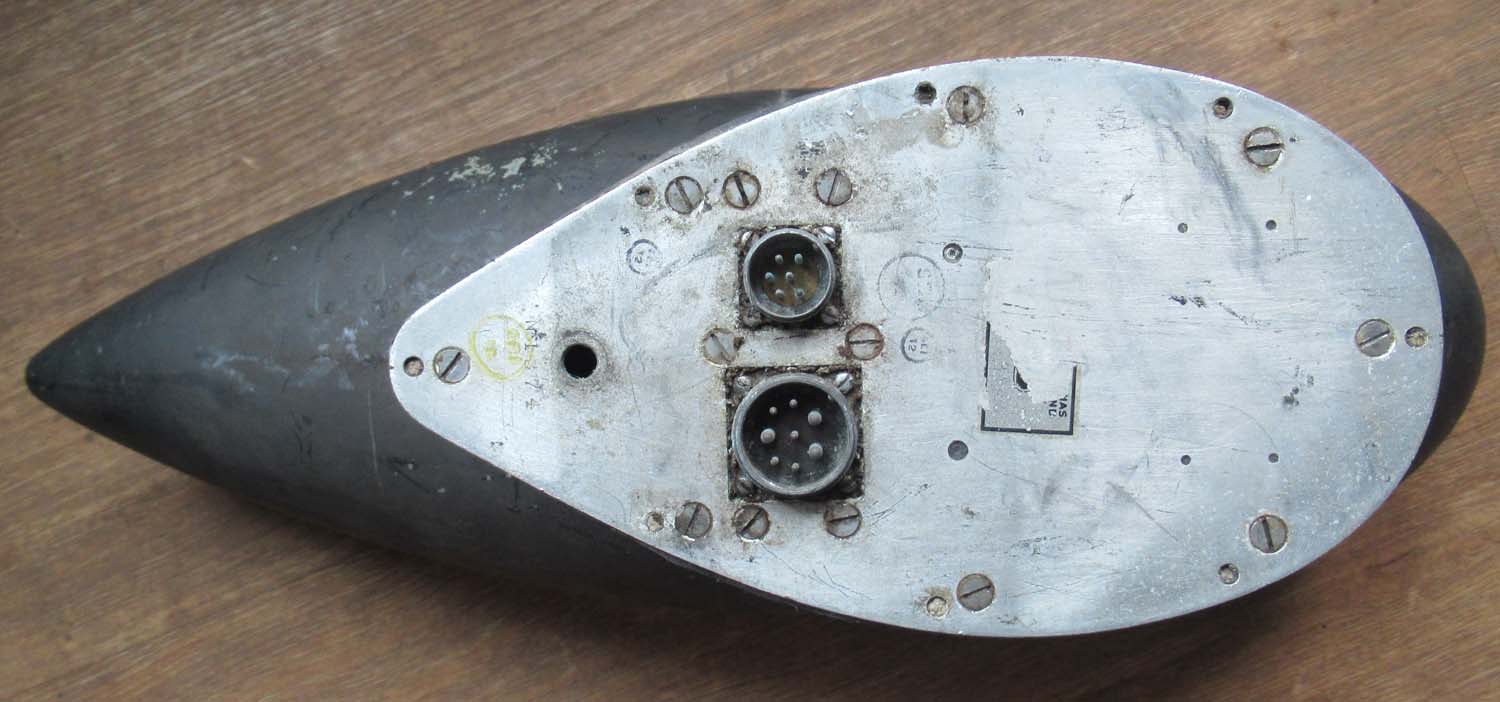
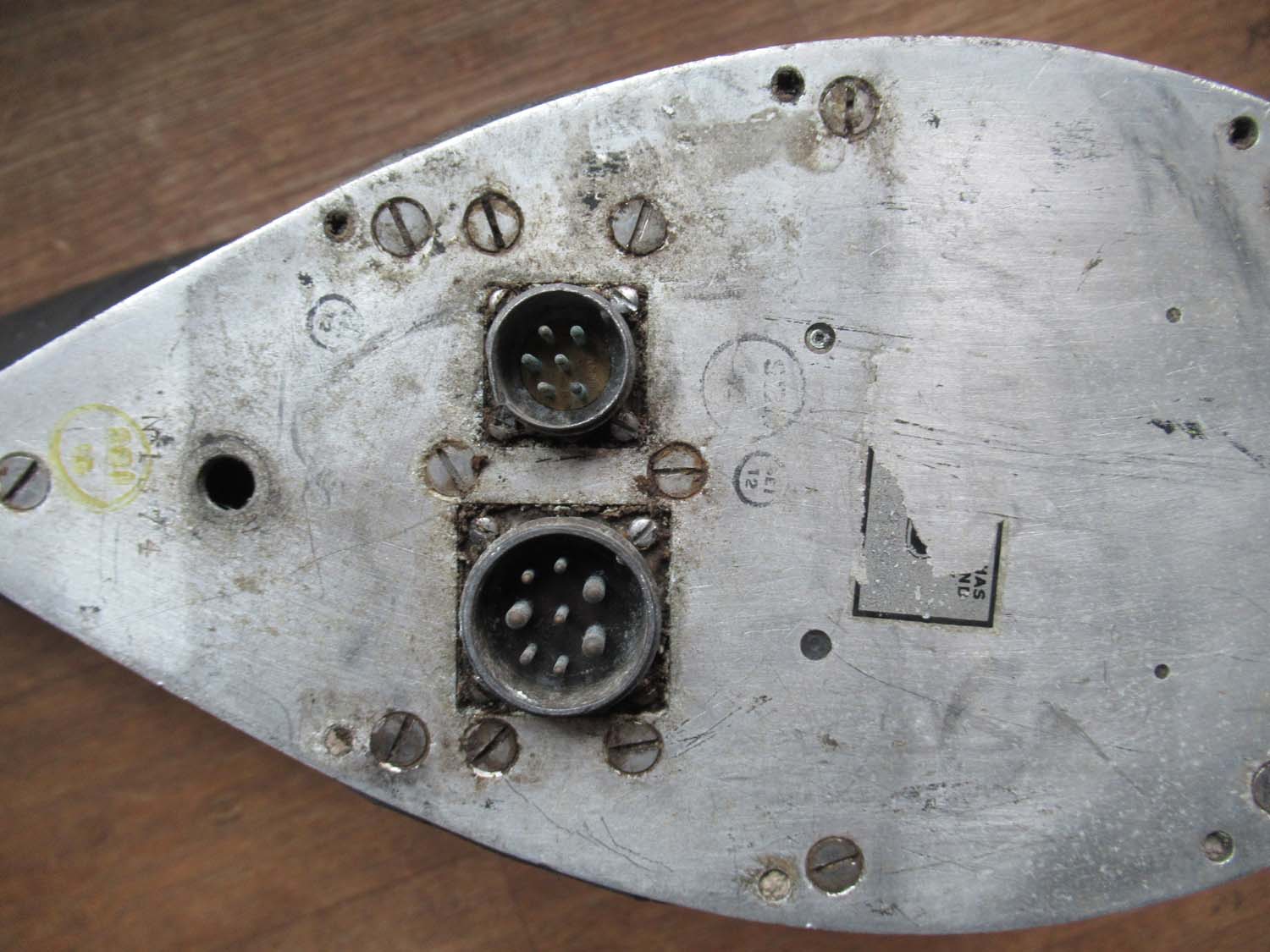
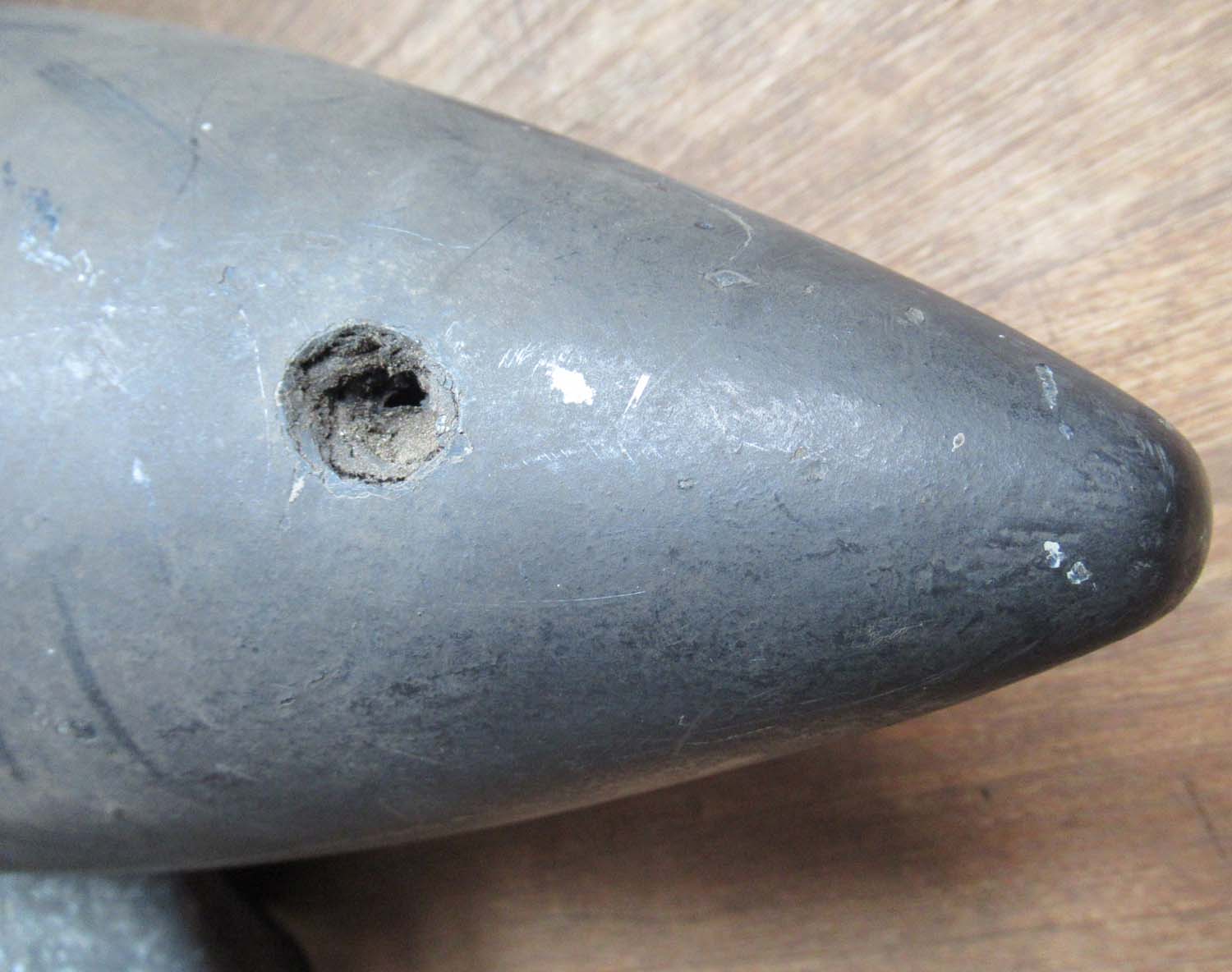
£495


Overseas buyers please
contact me for shipping
cost
|
Wellington Bomber D F Aerial
(No 17 Pg 4 Rad)
This DF aerial rates as one of the
rarest parts, you will see on this site.
Made by the British
company Marconi, this Bako case and DF aerial was being used
operationally in 1939 and 1940. It was fazed out shortly after
and replaced with another material. It was important that no
magnetic source was present. The unit was a radio compass
and helped the Wellington find its way to the target and
home again. The DF aerial rotates mechanically when the knob
on the control unit is turned. They are connected by a
Speedo type cable. The aerial can
clearly be seen fitted to the top fuselage just behind the
cockpit of the famous Wellington.
Ref No: 33
A/3S1
Click on pictures to enlarge
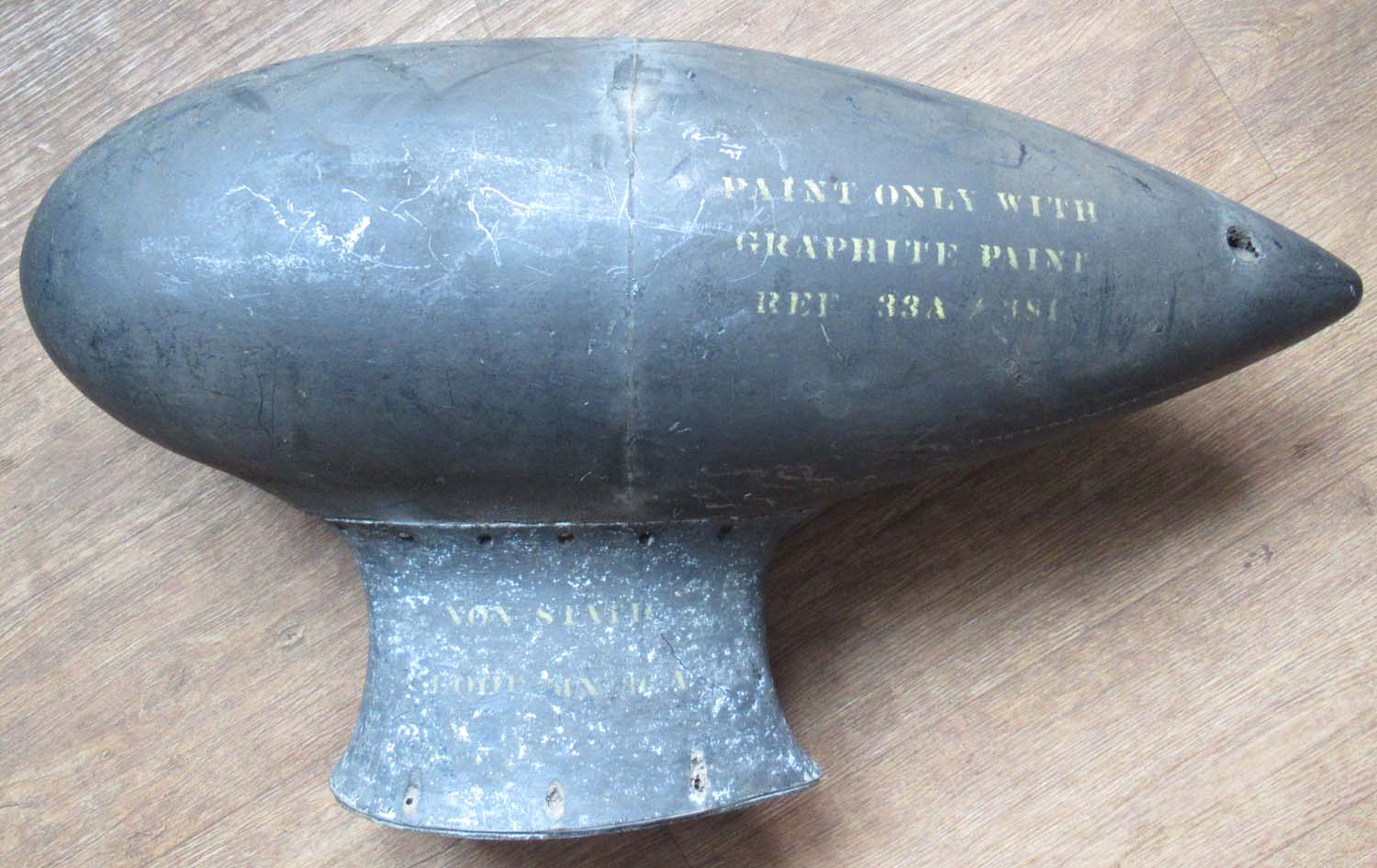
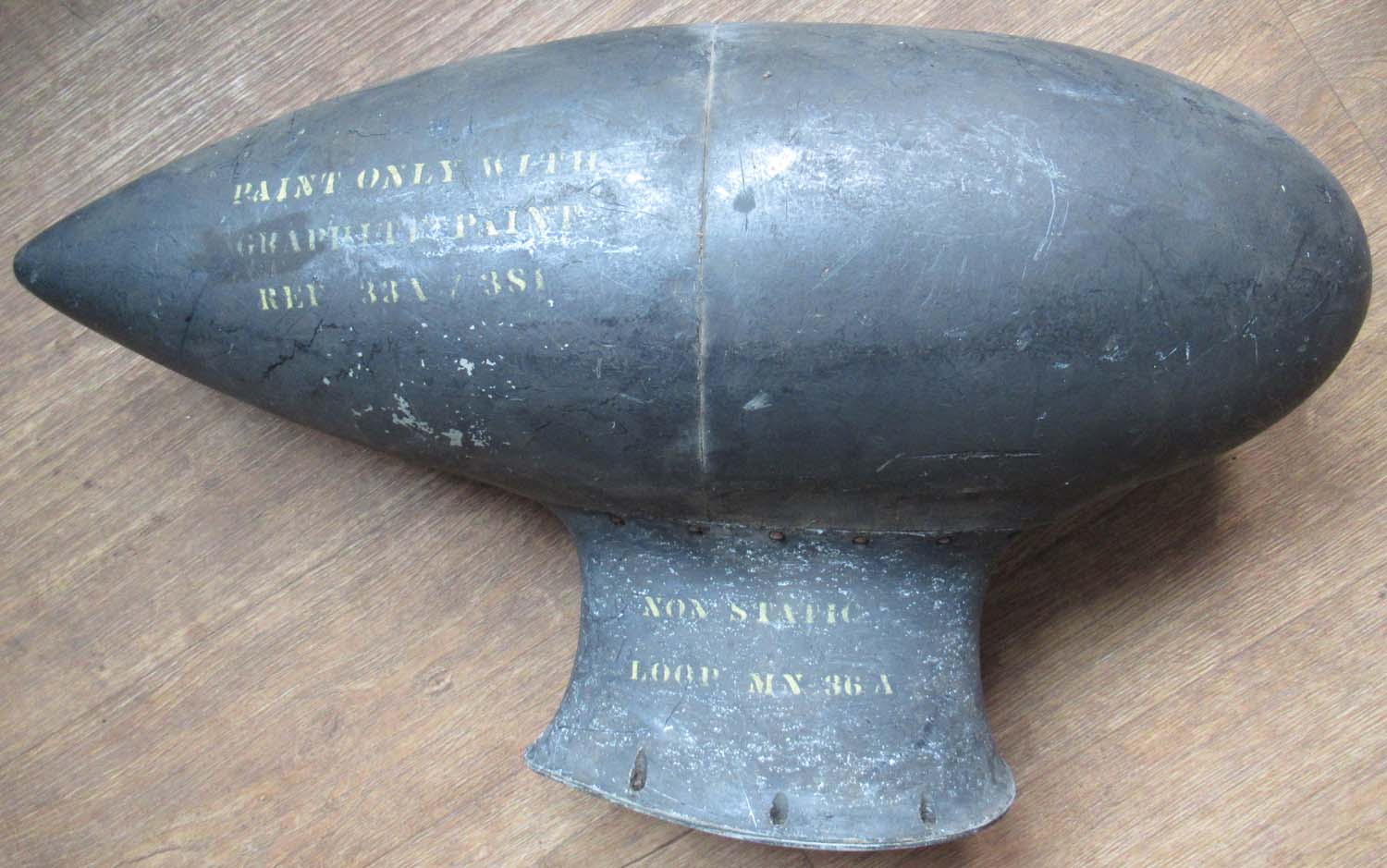
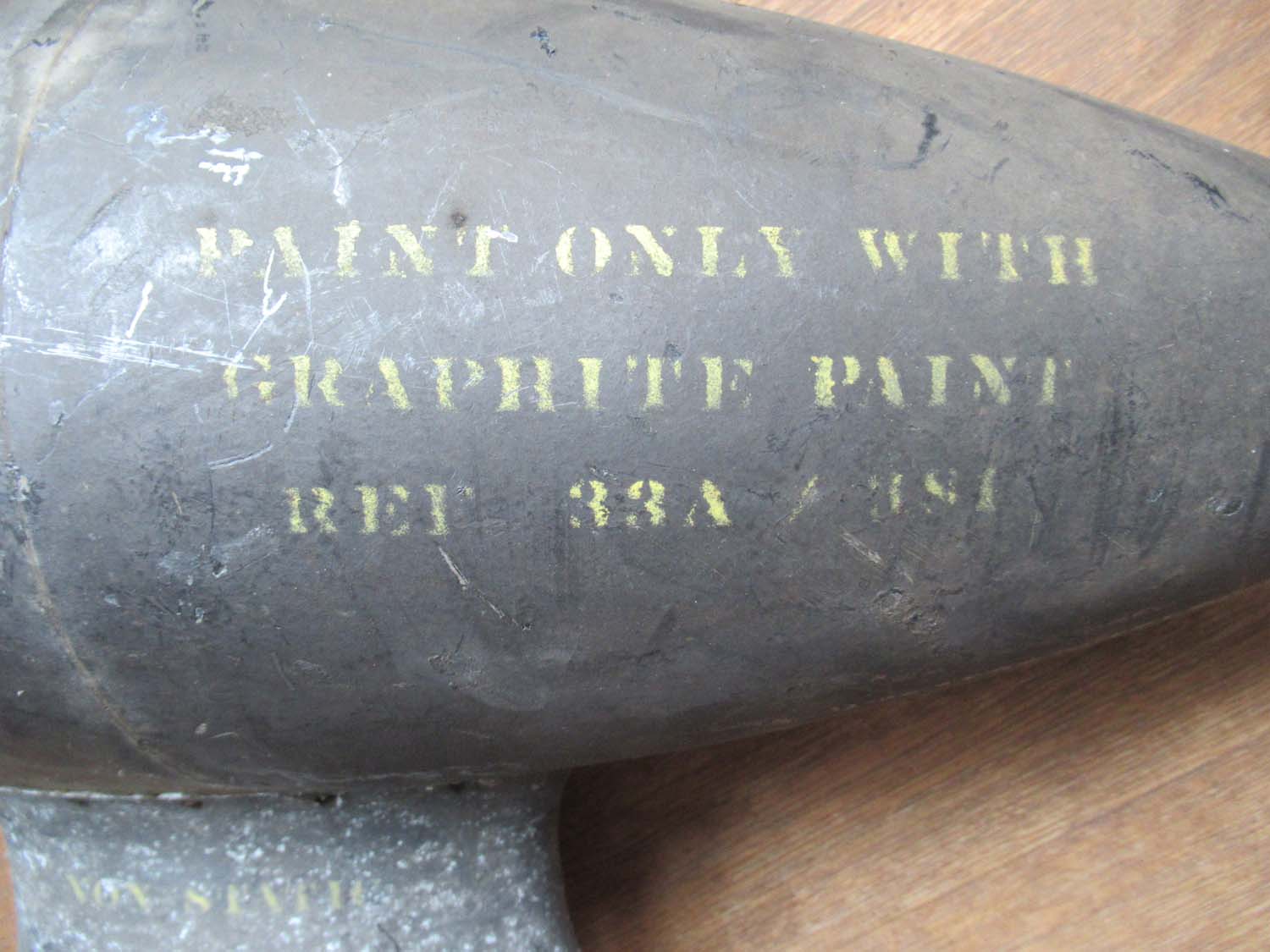
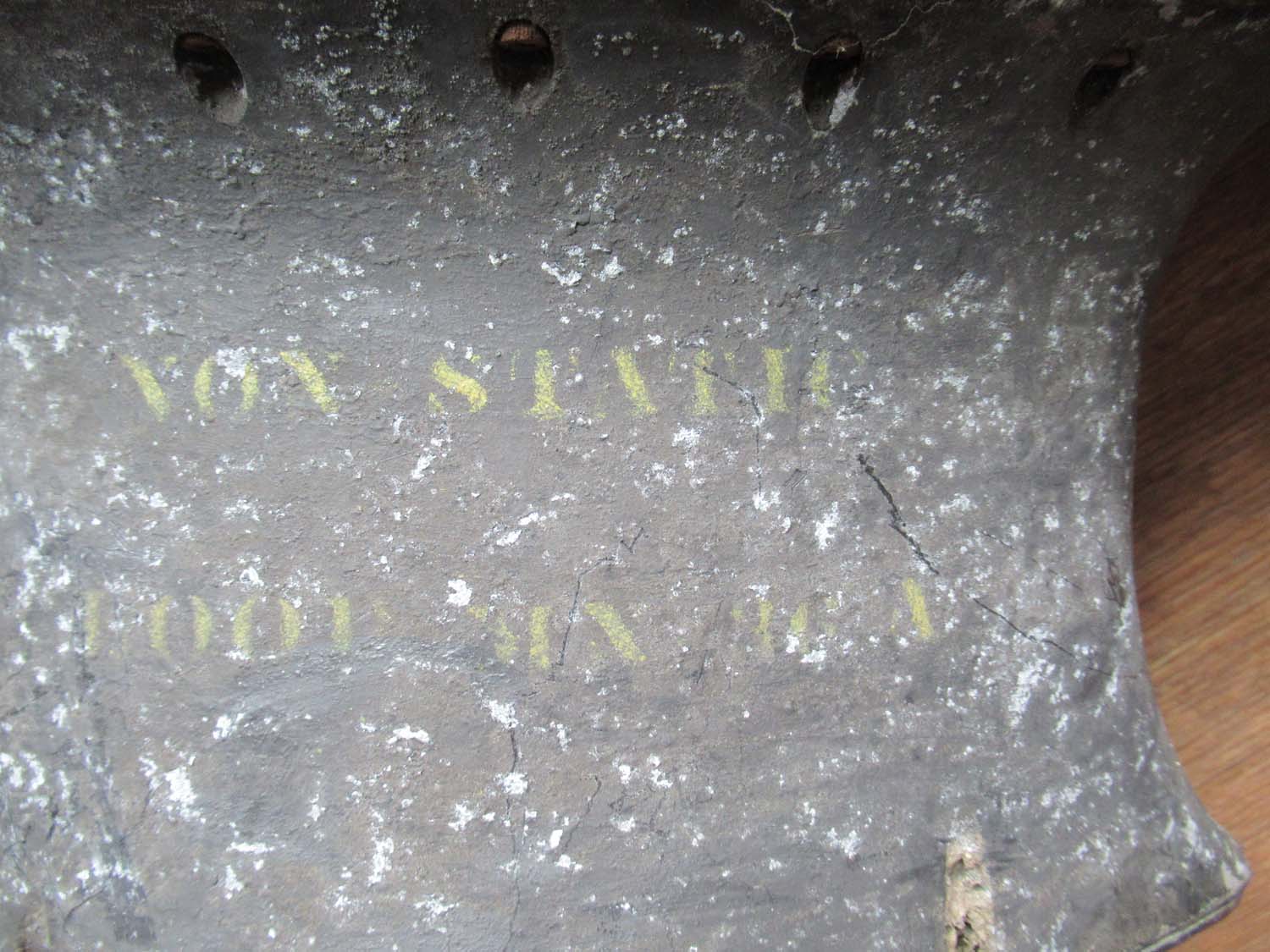 |
|
Click on pictures to enlarge
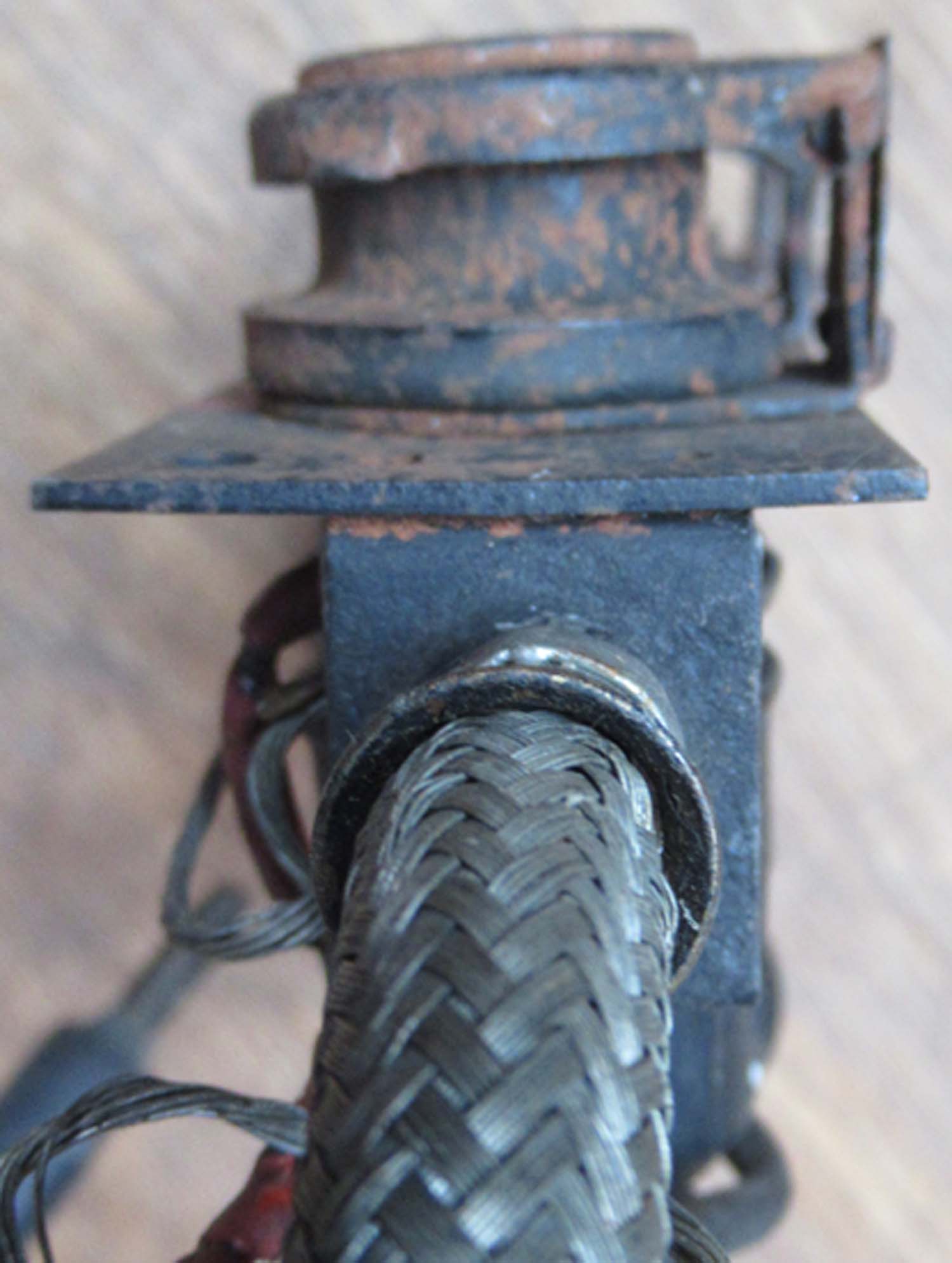
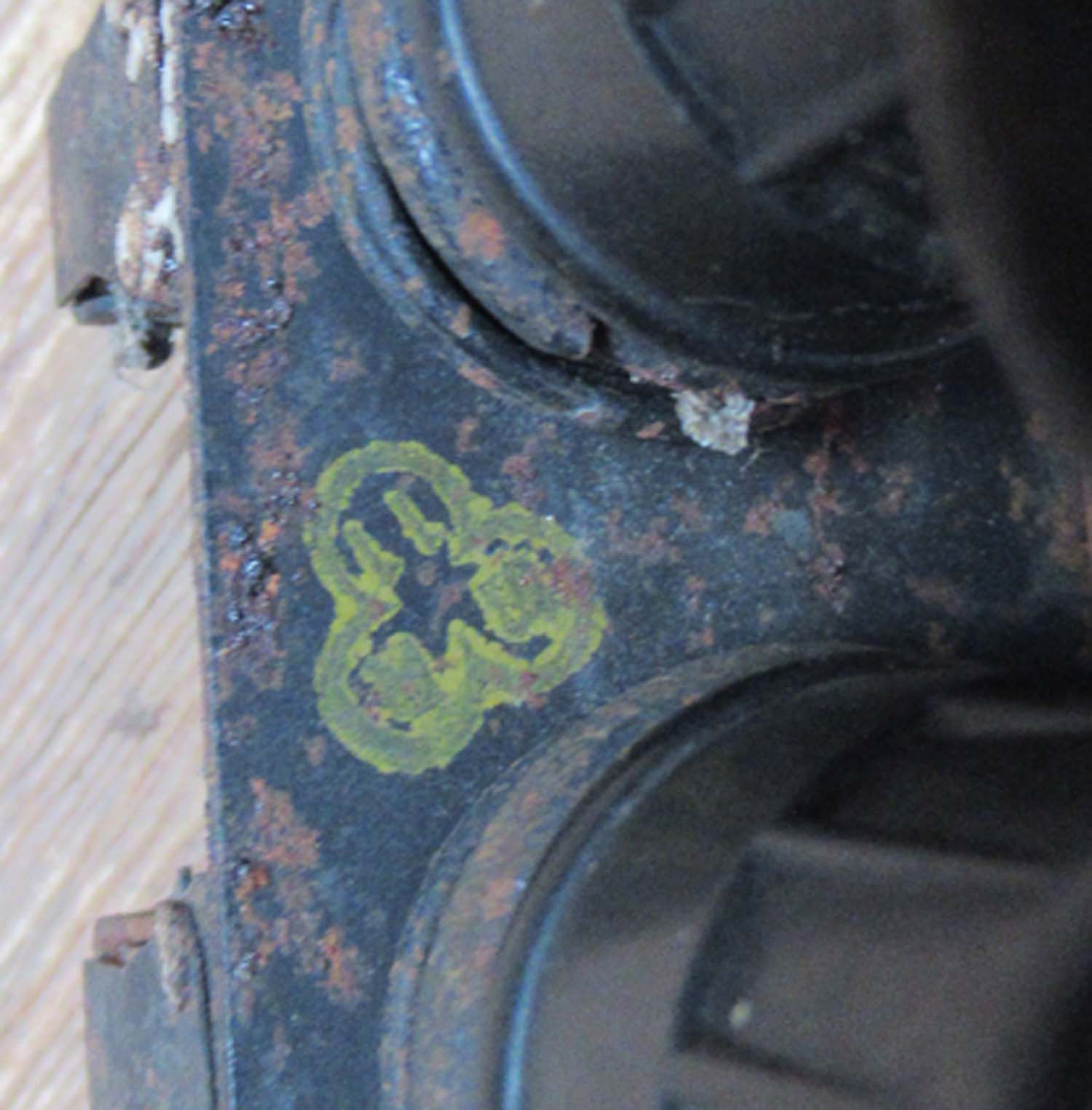 |
Radio/Radar Indicating Unit
(No 16 Pg4 Rad)
Here we have an indicating unit. It has three different coloured
lights amber, red and green.
Ref No: 10Q/28
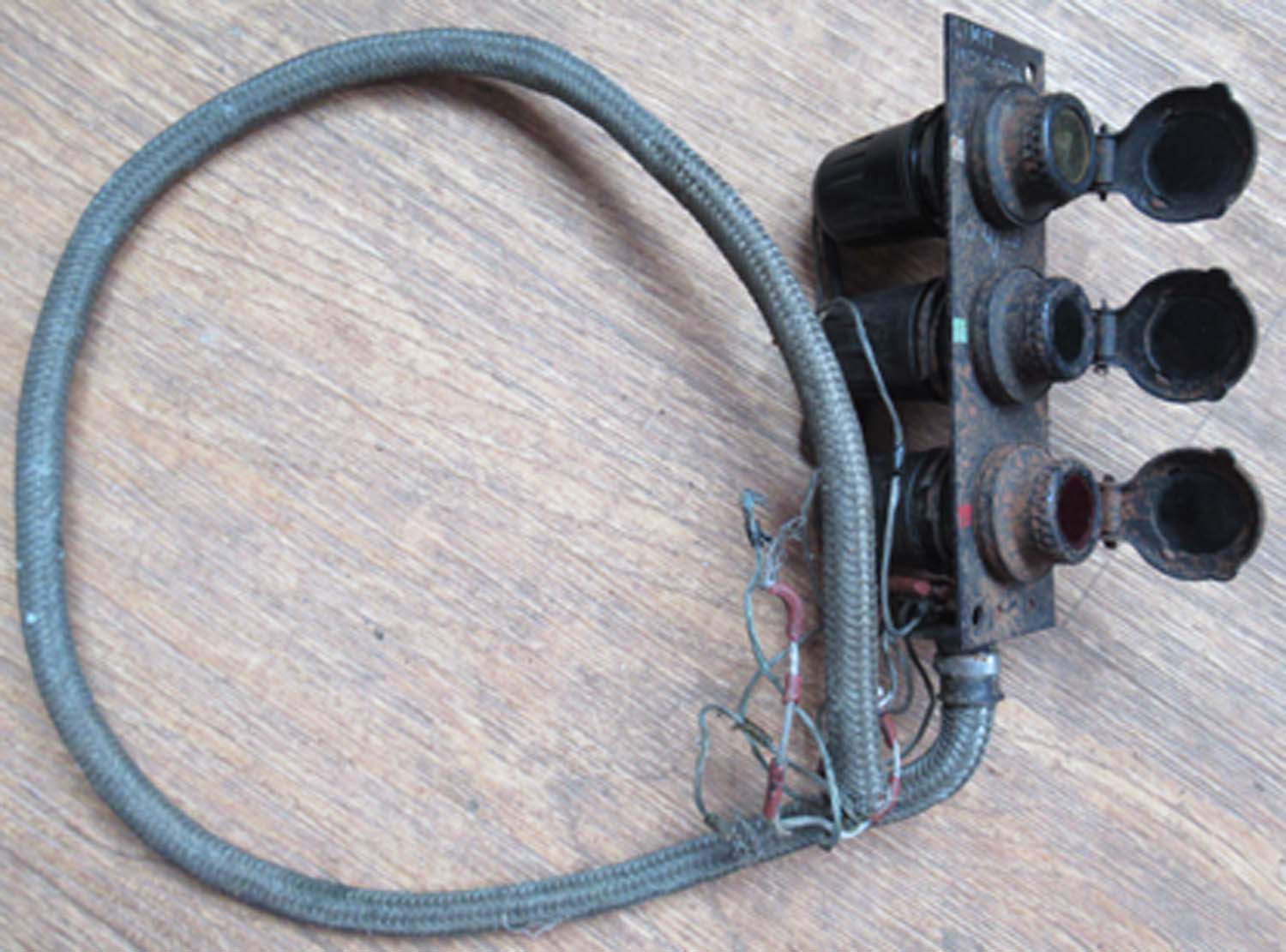
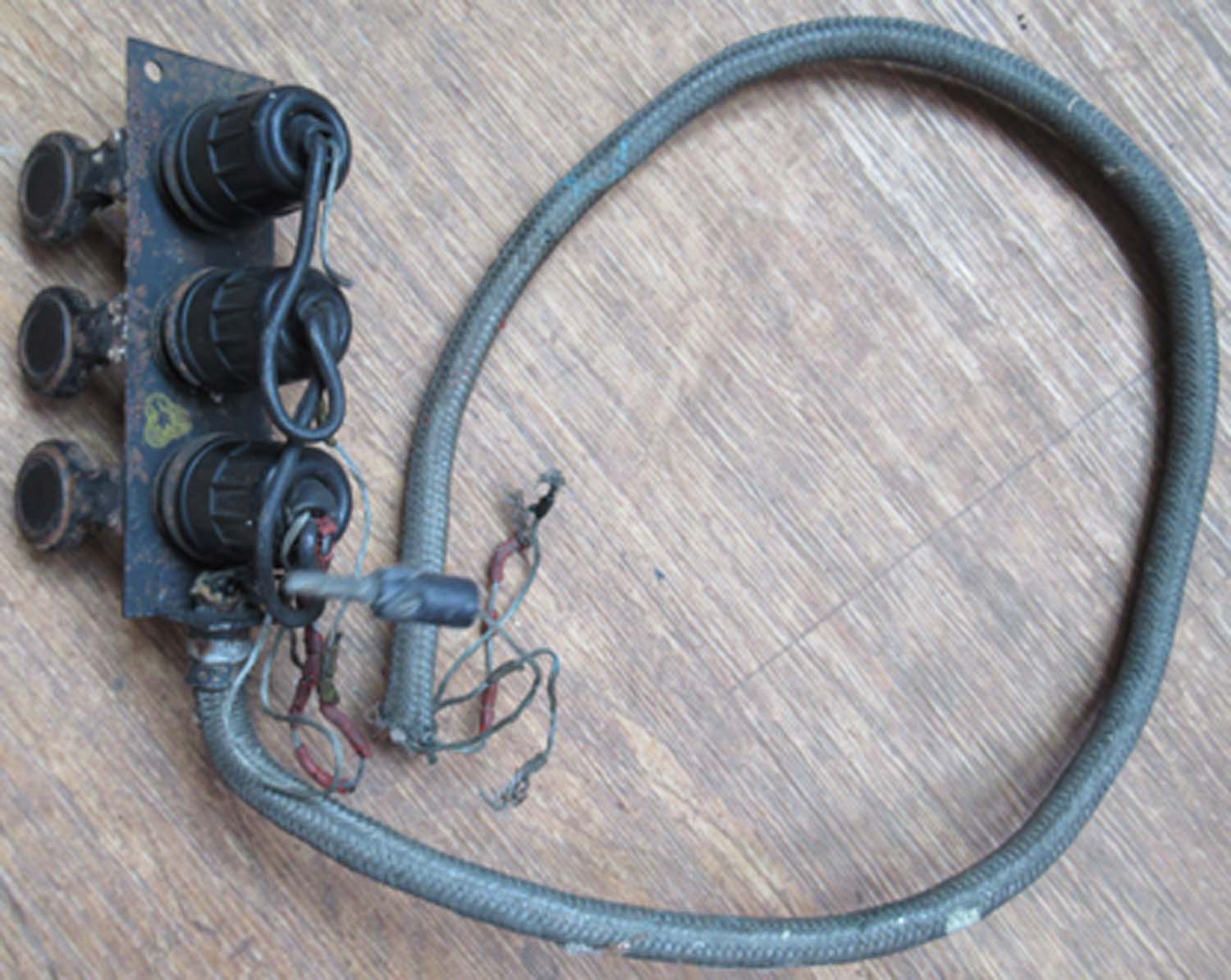
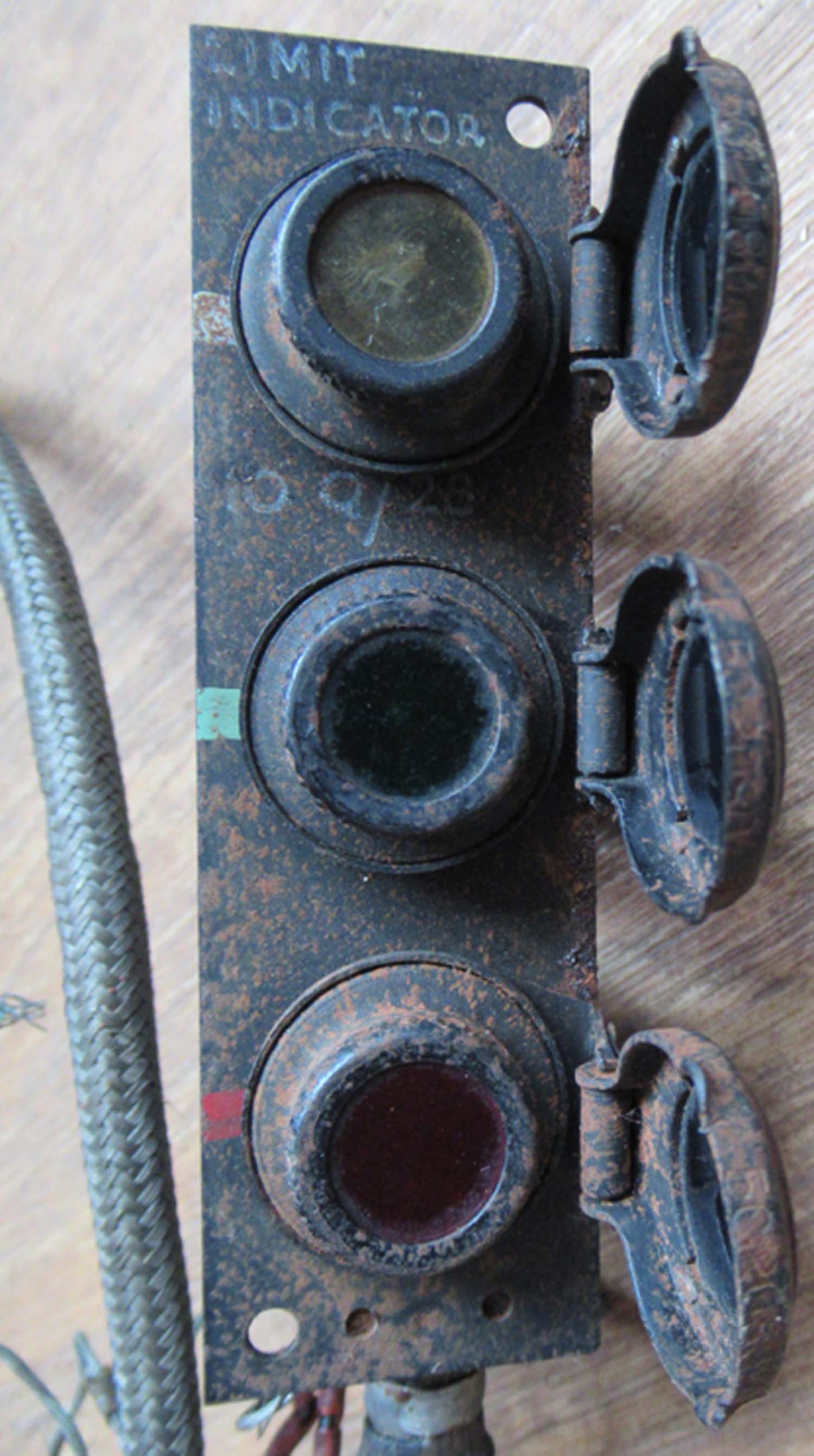 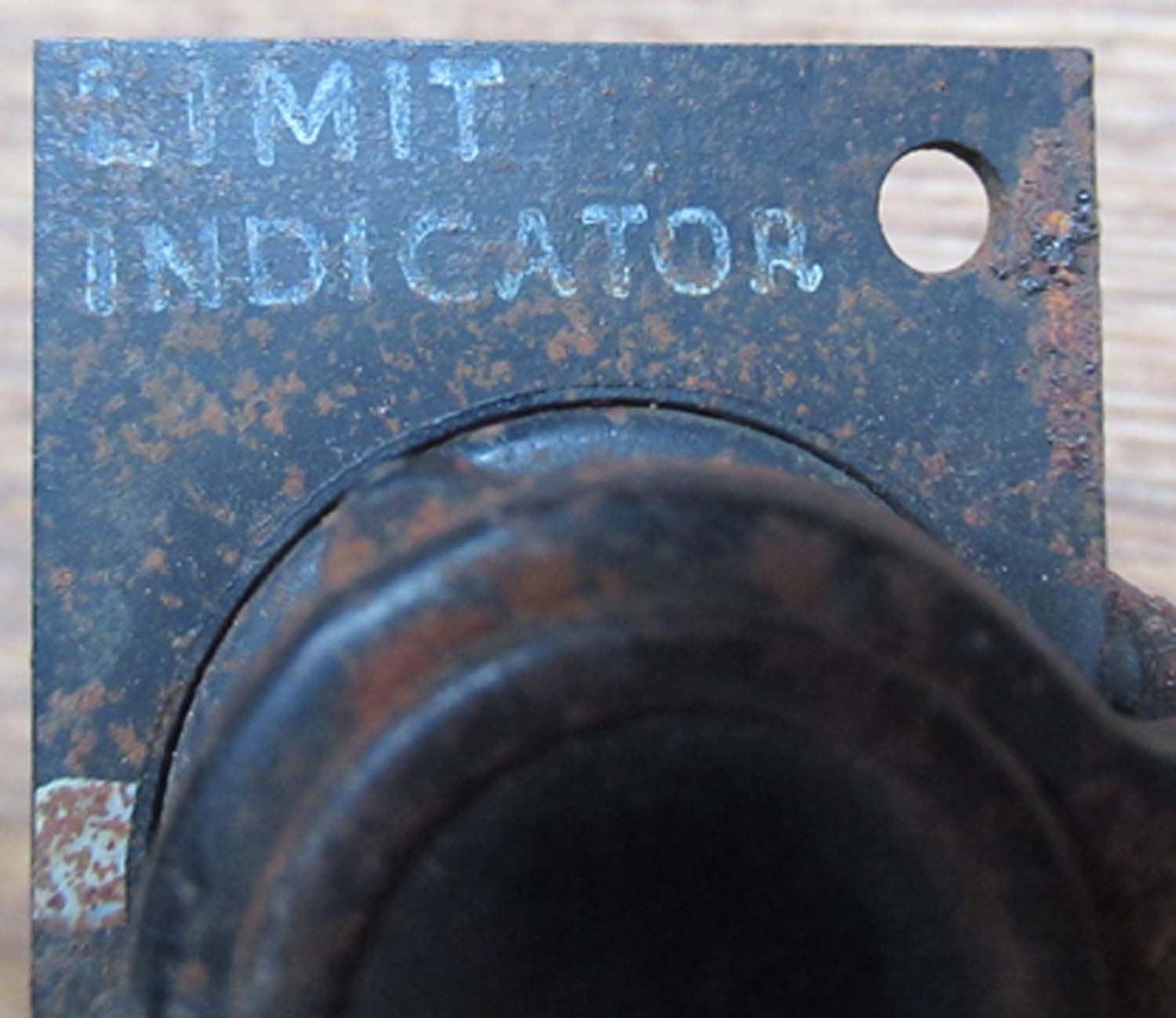
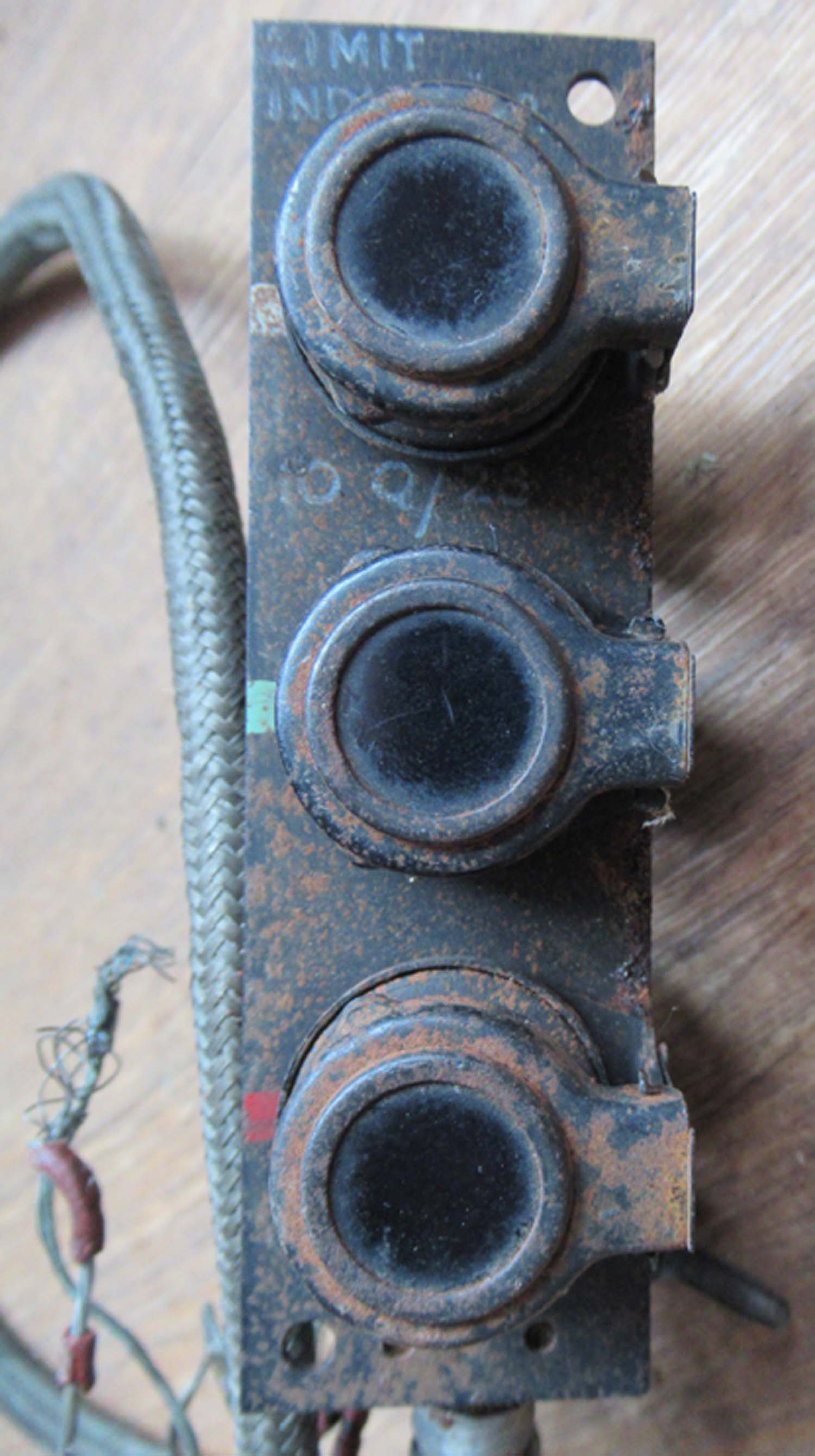
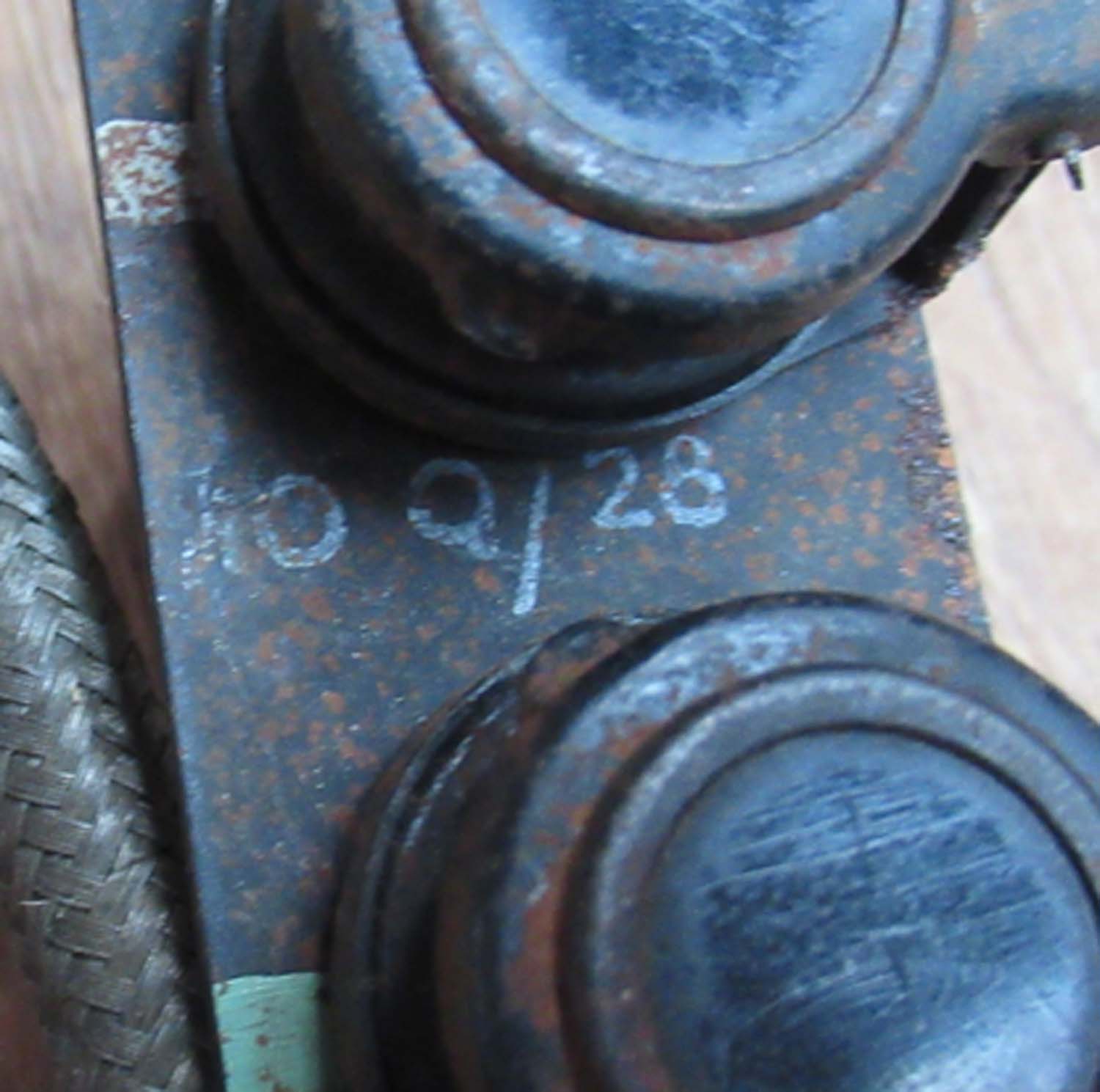
£75


|
|
Click on pictures to enlarge
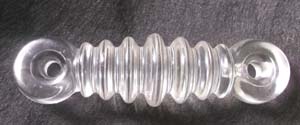
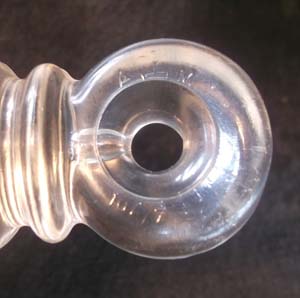
|
Air Ministry Radio
Strain Insulator (No
15 Pg4 Rad)
Here we have a rare glass insulator strain made by the
British Heat Resisting Company at their phoenix glass works
for the Air Ministry During WW2.
It is the dog bone design and carries the Air Ministry stamp.
It is
also marked Phoenix British Made.
Ref No:10A/7652
£150


|
|
Click on pictures to enlarge

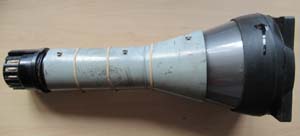
£195


|
Radar Display Tube (No
13 Pg4 Rad)
Here is a spare display tube
for the Gee set appears to be in good condition
Click on pictures to enlarge
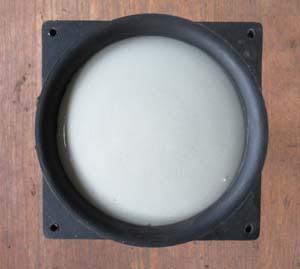 
|
|
Click on picture to enlarge
 |
Radar/Radio Power
Unit Type 1562 (No
12 Pg4 Rad)
Here we have a power unit.
10KB shows
this to be a radio/radar power unit transformer.


|
|
Click on picture to enlarge
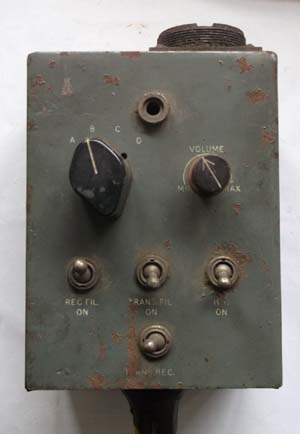 |
R/T Control Unit Type 289 (No
11 Pg4 Rad)
This box rattles so the contents
are probably damaged okay for display.
Click on picture to enlarge
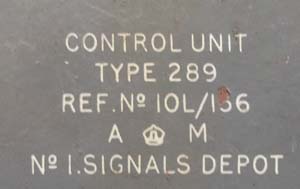
£55


|
|
Click on pictures to enlarge


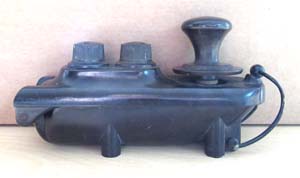
|
Bathtub Morse Key
Switch
3 (No
10 Pg4 Rad)
Used in Lancasters and
practically every RAF wartime Bomber for communicating using
Morse.
This one is complete and in
good original condition, the plunger button works as it should.
10F/507 on
main body 10A/7790 on
plunger 10F/7741 on
main body
Click on picture to enlarge

£175


|
|
Click on pictures to enlarge
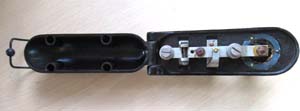
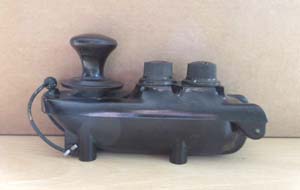
 |
Bathtub Morse Key
Switch
2 (No
9 Pg4 Rad)
Used in Lancasters and
practically every RAF wartime Bomber for communicating using
Morse.
This one is complete and in
good original condition, the plunger button works as it should.
10F/507 on
main body 10A/7790 on
plunger 10F/7741 on
main body
Click on picture to enlarge
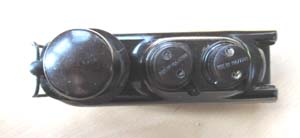
£175


|
|
Click on pictures to enlarge
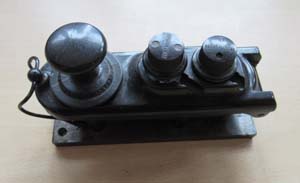

|
Bathtub Morse Key
Switch
4 On Base (No
8 Pg4 Rad)
Used in Lancasters and
practically every RAF wartime Bomber for communicating using
morse.
This one is complete and in
good original condition, the plunger button works as it should.
This one is mounted on a bakelite base.
10F/507 on
main body 10A/7790 on
plunger 10F/7741 on
main body
£175


|
|
Click on pictures to enlarge


Note
damage to the plunger on the picture below
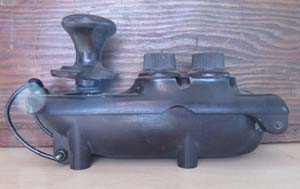 |
Bathtub Morse Key
Switch (No
7 Pg4 Rad)
Used in Lancasters and
practically every RAF wartime Bomber for communicating using
Morse.
This one has a peace missing
at the base of the plunger button works as it should.
10F/507 on
main body
10A/7790 on
plunger
10F/7741 on
main body
£55


|
 |
Glass Aerial Insulator (No
6 Pg4 Rad) Pictured here are two glass
insulators used in wartime aircraft to insulate aerials.
They are stored as shown on the
left, and the price is for each
individual glass.
Click on pictures to enlarge
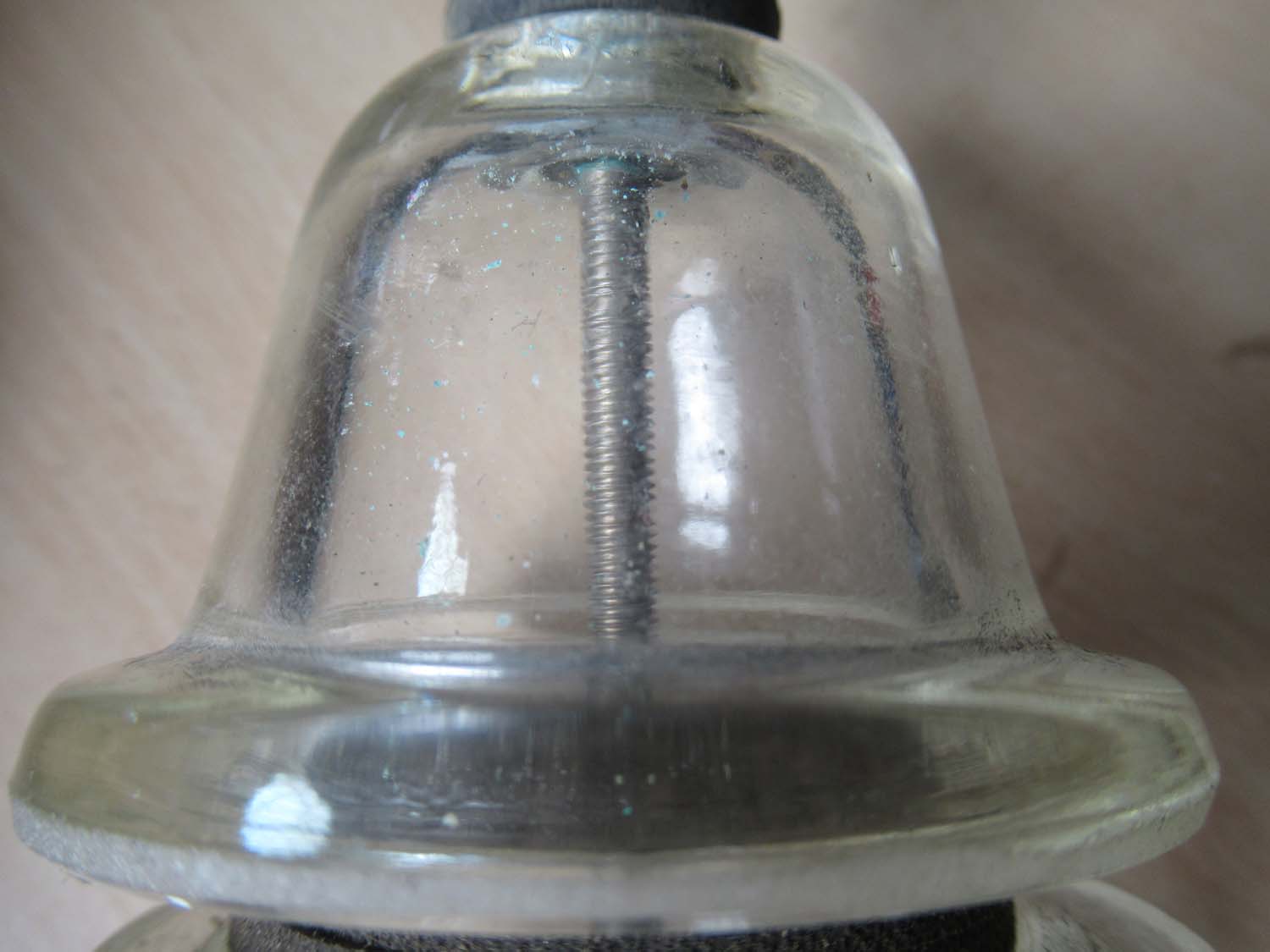
£55 each


|
|
Click on pictures to enlarge
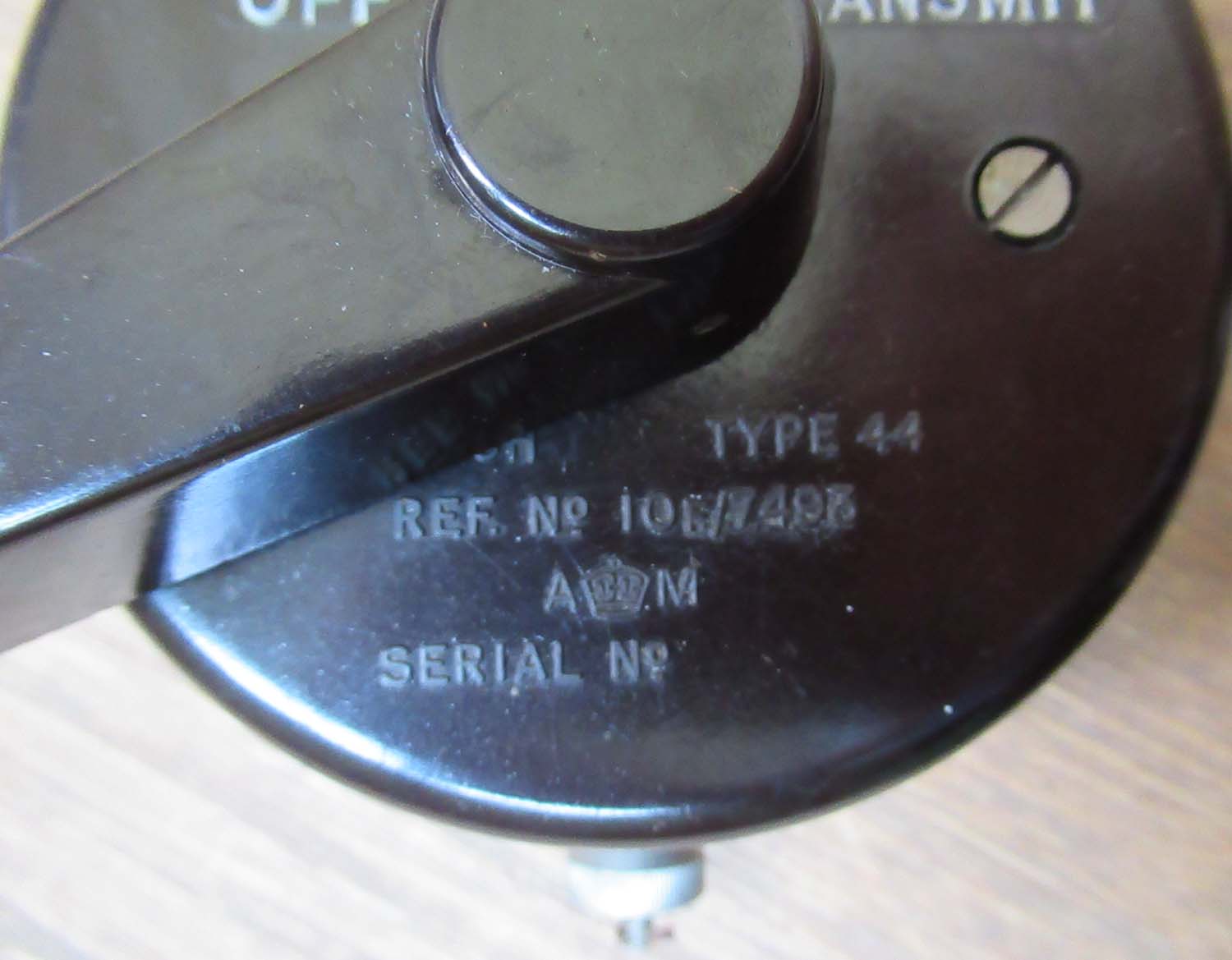
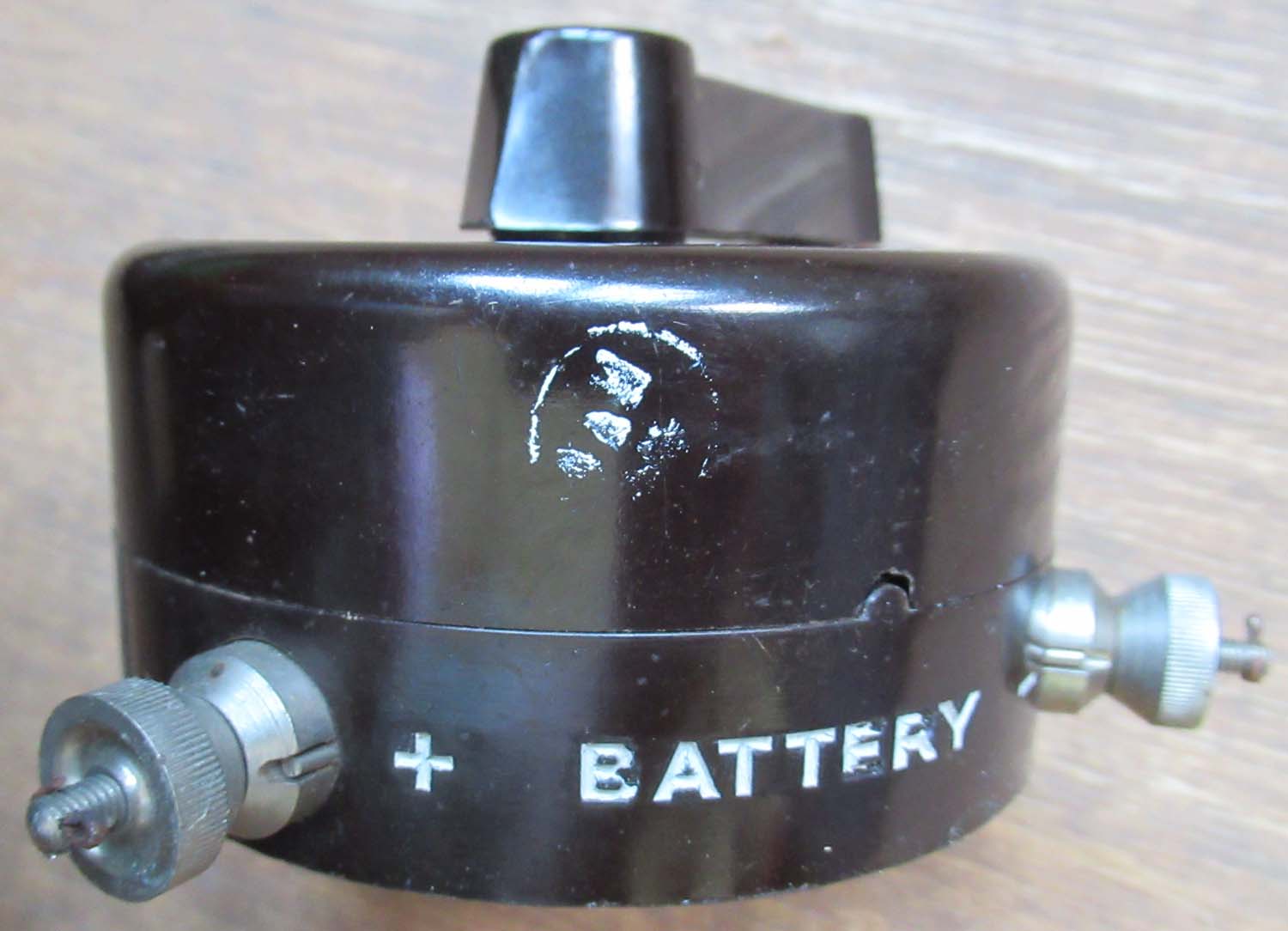
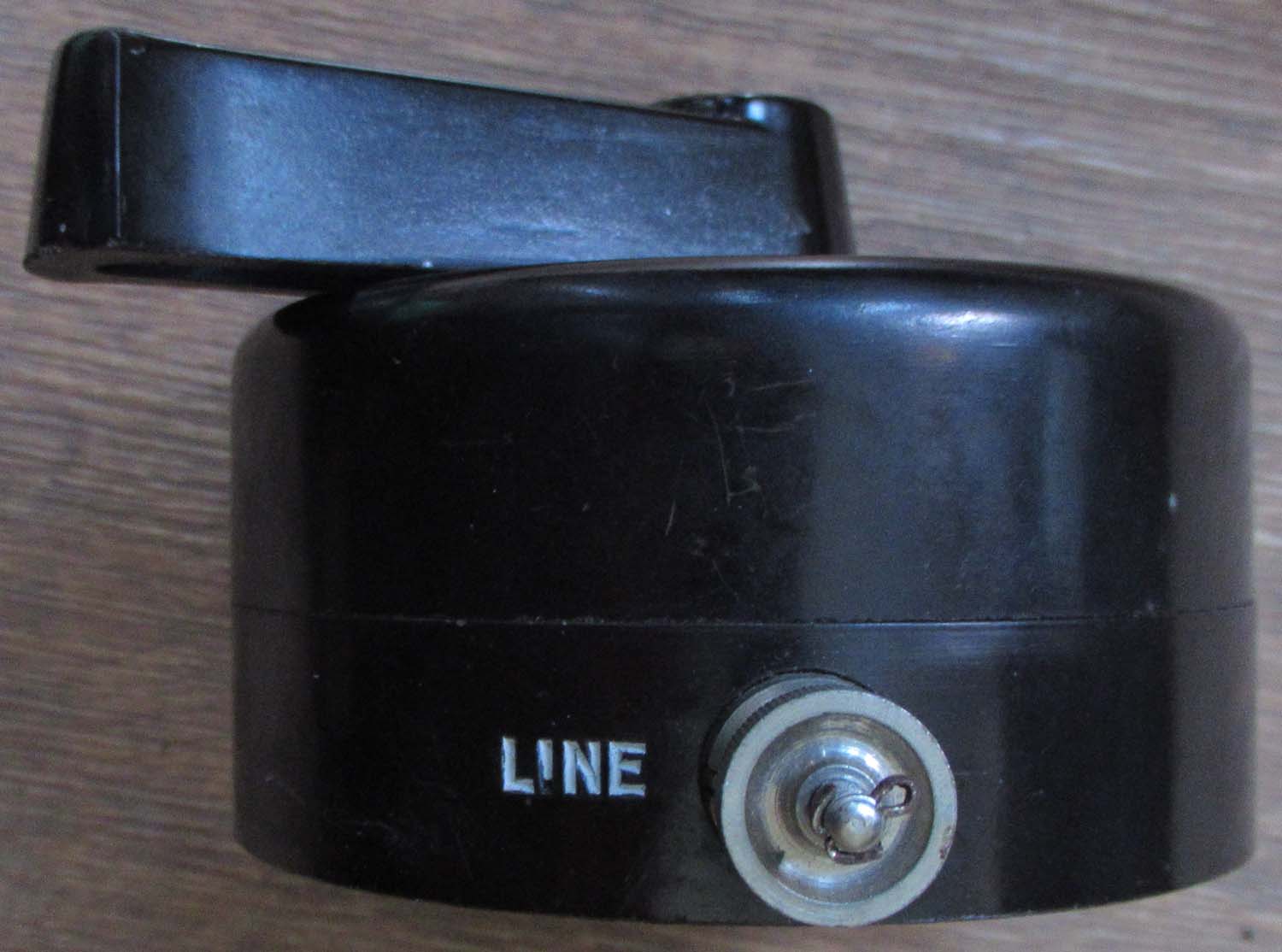 |
Type 44 Radio
Switch (No
5 Pg4 Rad)
Here we
have a Type 44 Generator Running Radio Switch. Air Ministry
marked.
This
switch is made of Bakelite and is in mint condition.
Ref
No: 10F/7493
Click on pictures to enlarge

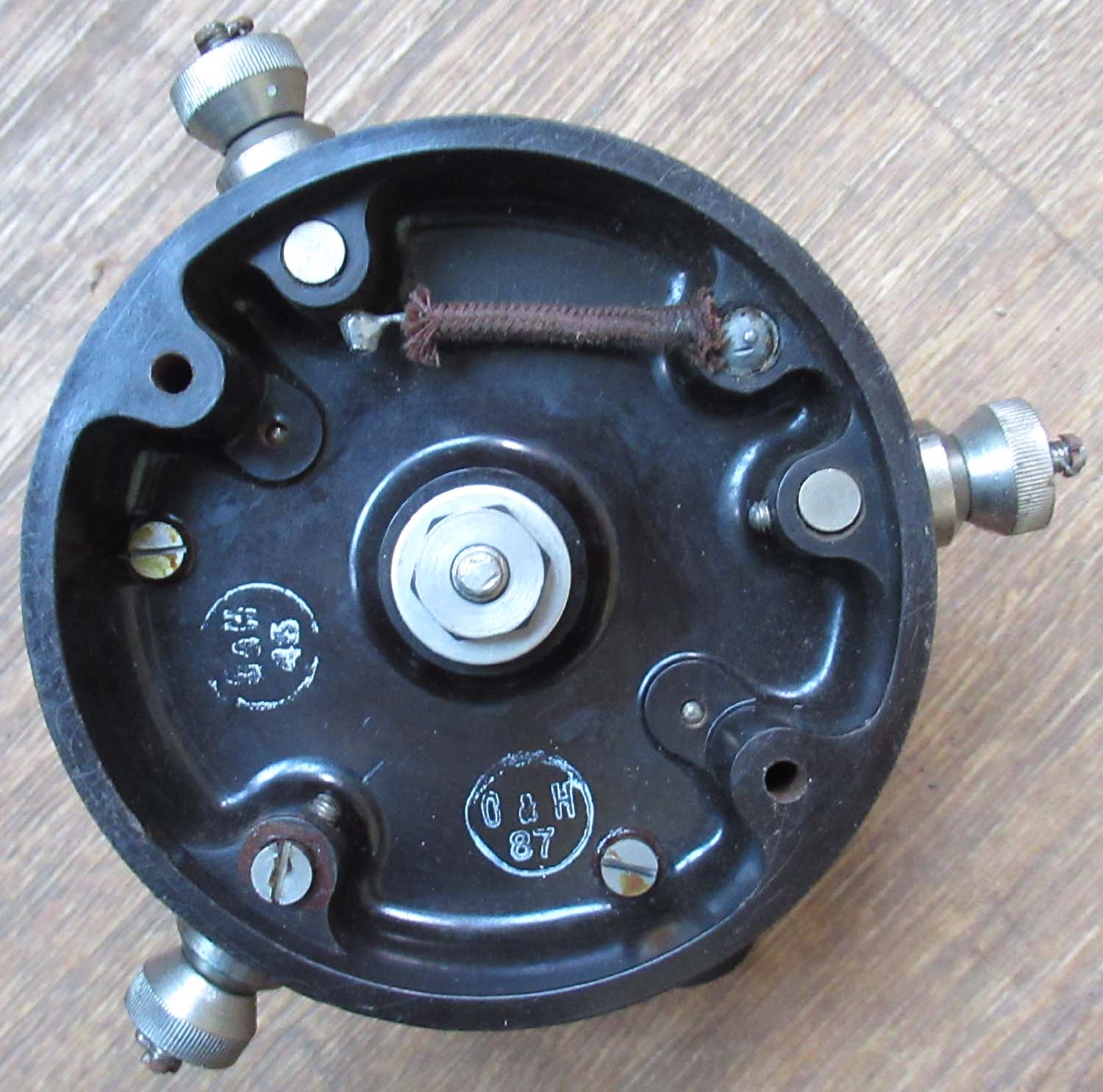
£125


|
|
Click on pictures to enlarge

 |
C-56/APX-2 Operators
Control Unit (No 4 Pg4 Rad)
Here we have a operators control unit C-56/APX-2.
It
is a component of Aircraft
Interrogator-Responsor-Transponder AN/APX-2.
The AN/APX-2 is an American Mk.III IFF transponder and
Interrogator-Responsor.
This was used on USN Aircraft Such as the TBM Avenger.
£145


|
|
Click on pictures to enlarge
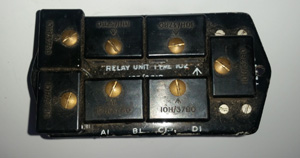
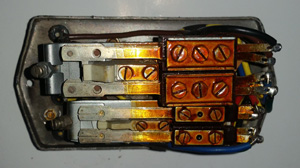 |
Radio Relay Unit (No 3 Pg4
Rad)
Here we have a Type 102 relay unit.
Ref No: 10F/2312
£95


|
|
Click on
picture to enlarge

|
Pilots Microphone Plug (No
2 Pg4 Rad)
This is a new old stock microphone plug to connect the pilot
or aircr ew
to the radio system. Complete with clip.
Several
available
£35 each


|
|
Click on
picture to enlarge
 |
Barry Radio Anti Vibration
Mount (No 1 Pg4 Rad)
Here we have an Anti-Vibration Radio Mount.
Manufactured by Barry Wright Corp.
Part
Number GB-770-1G
Several available
£25 each


|
|
Click on pictures to enlarge
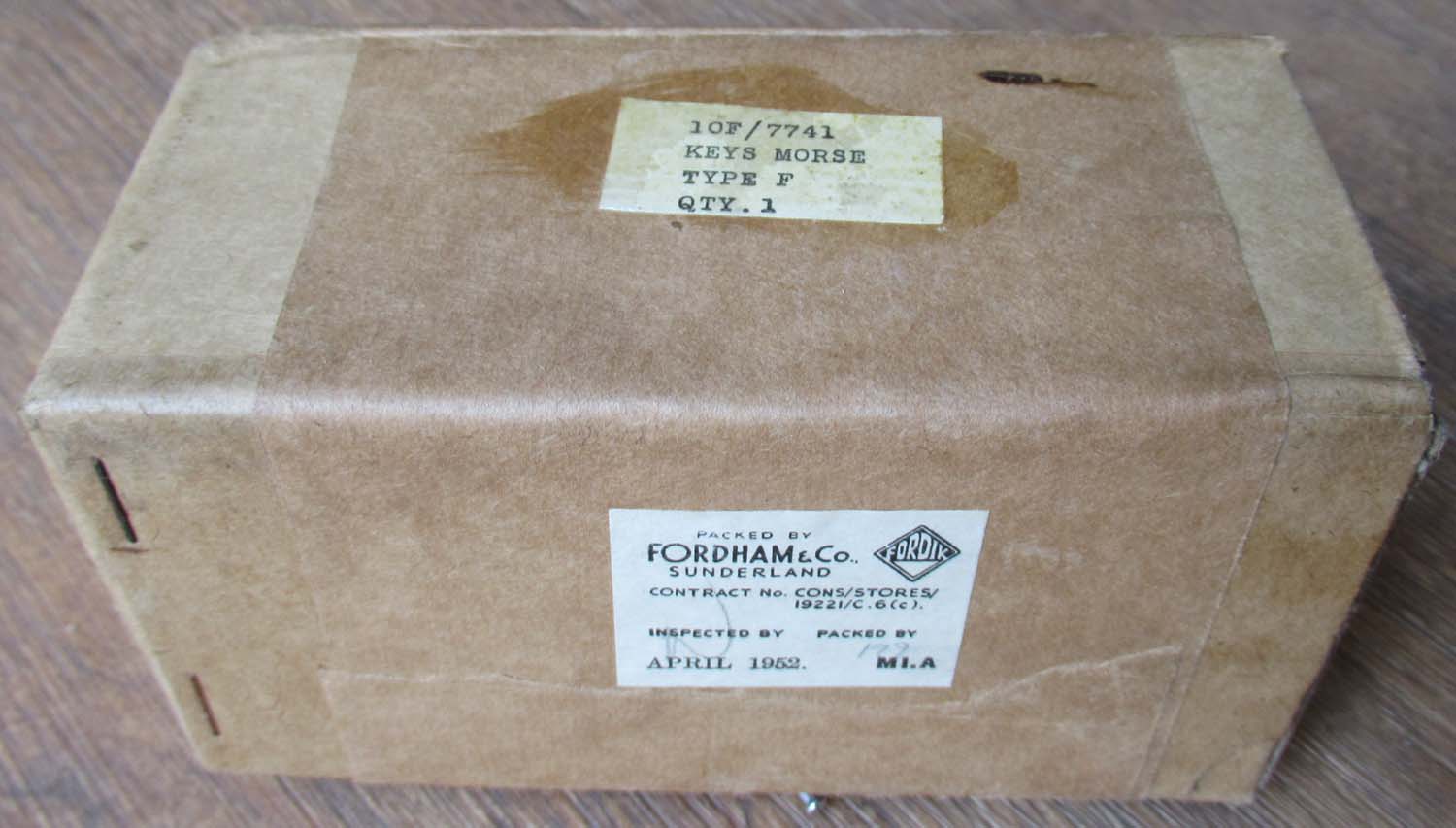
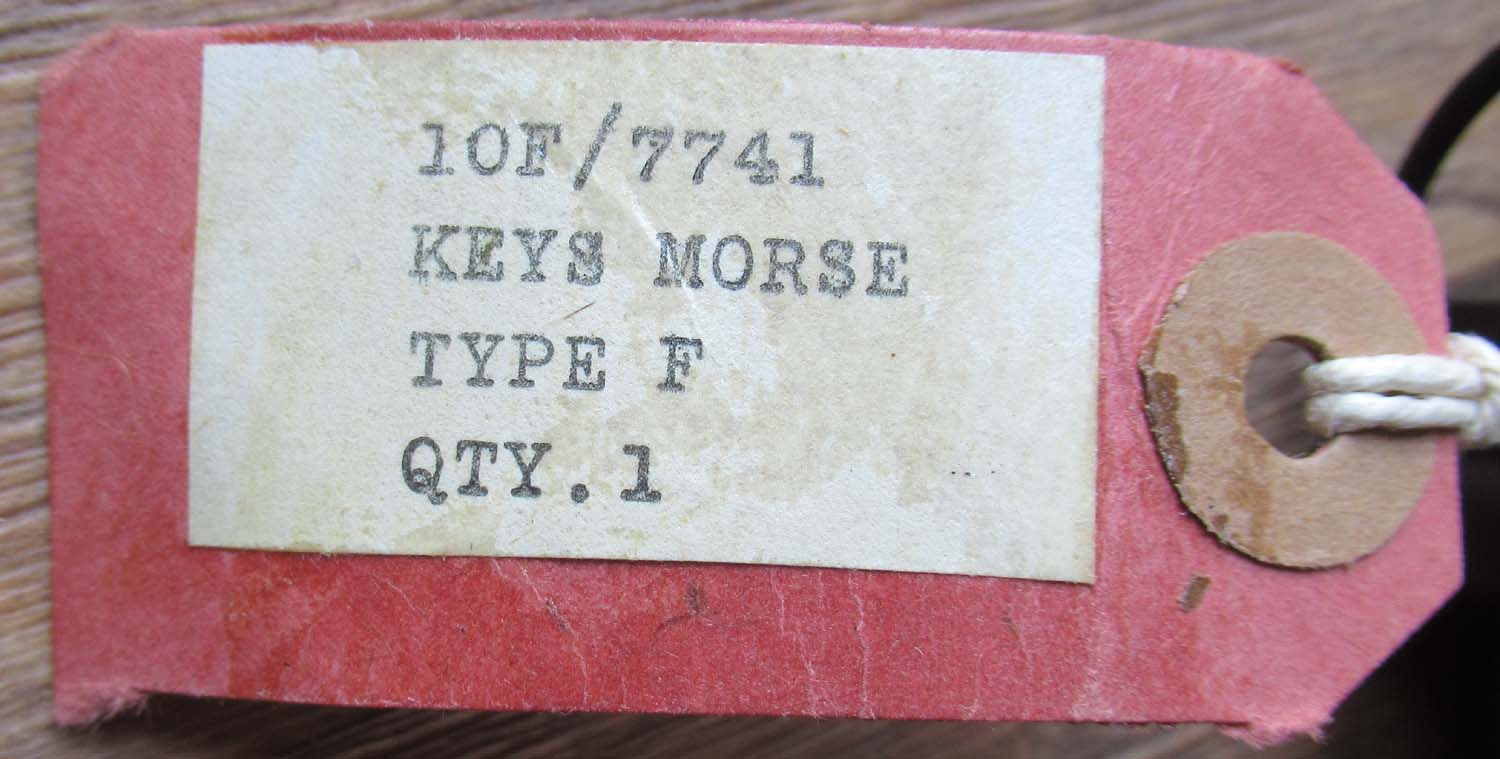
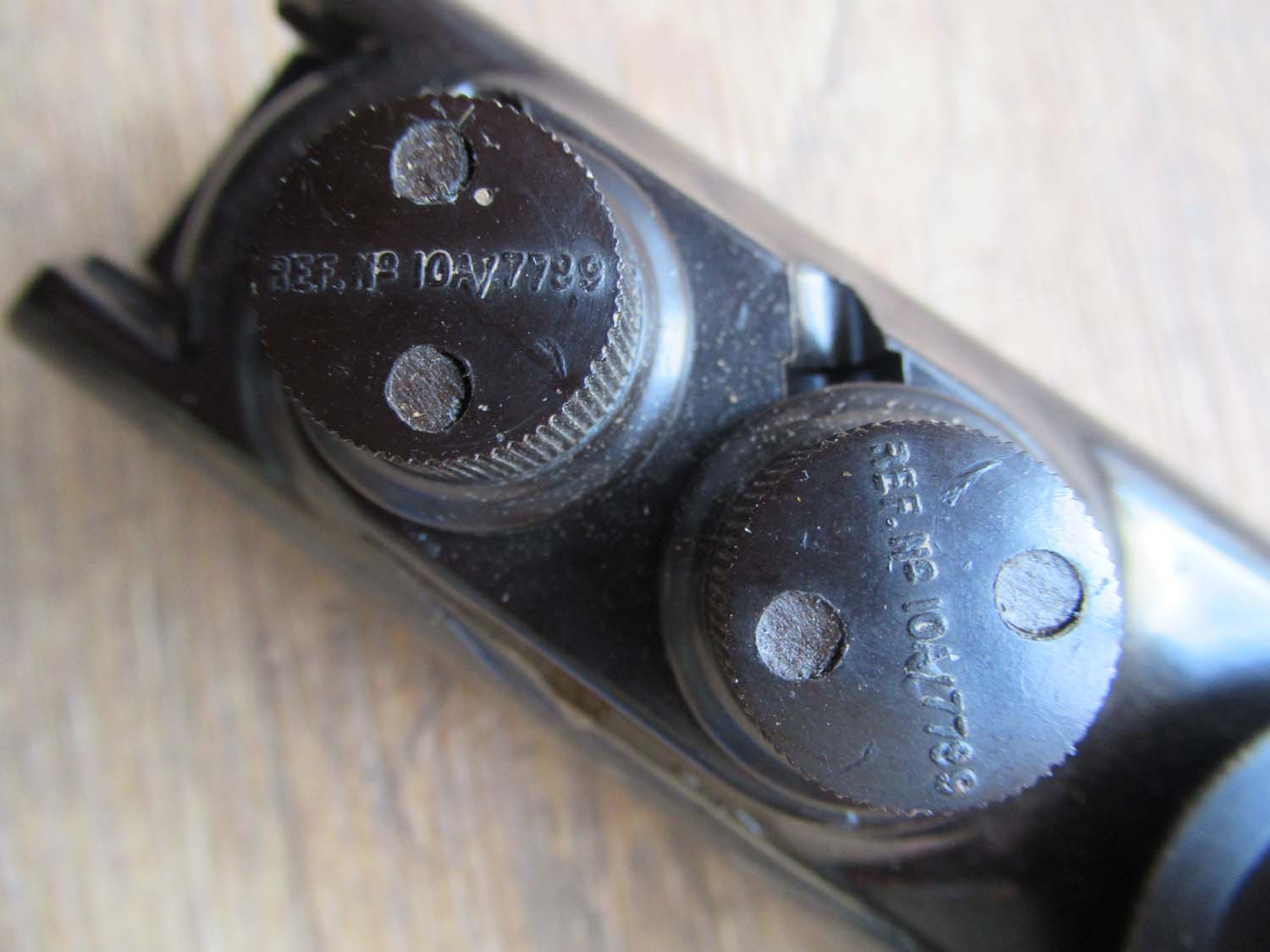
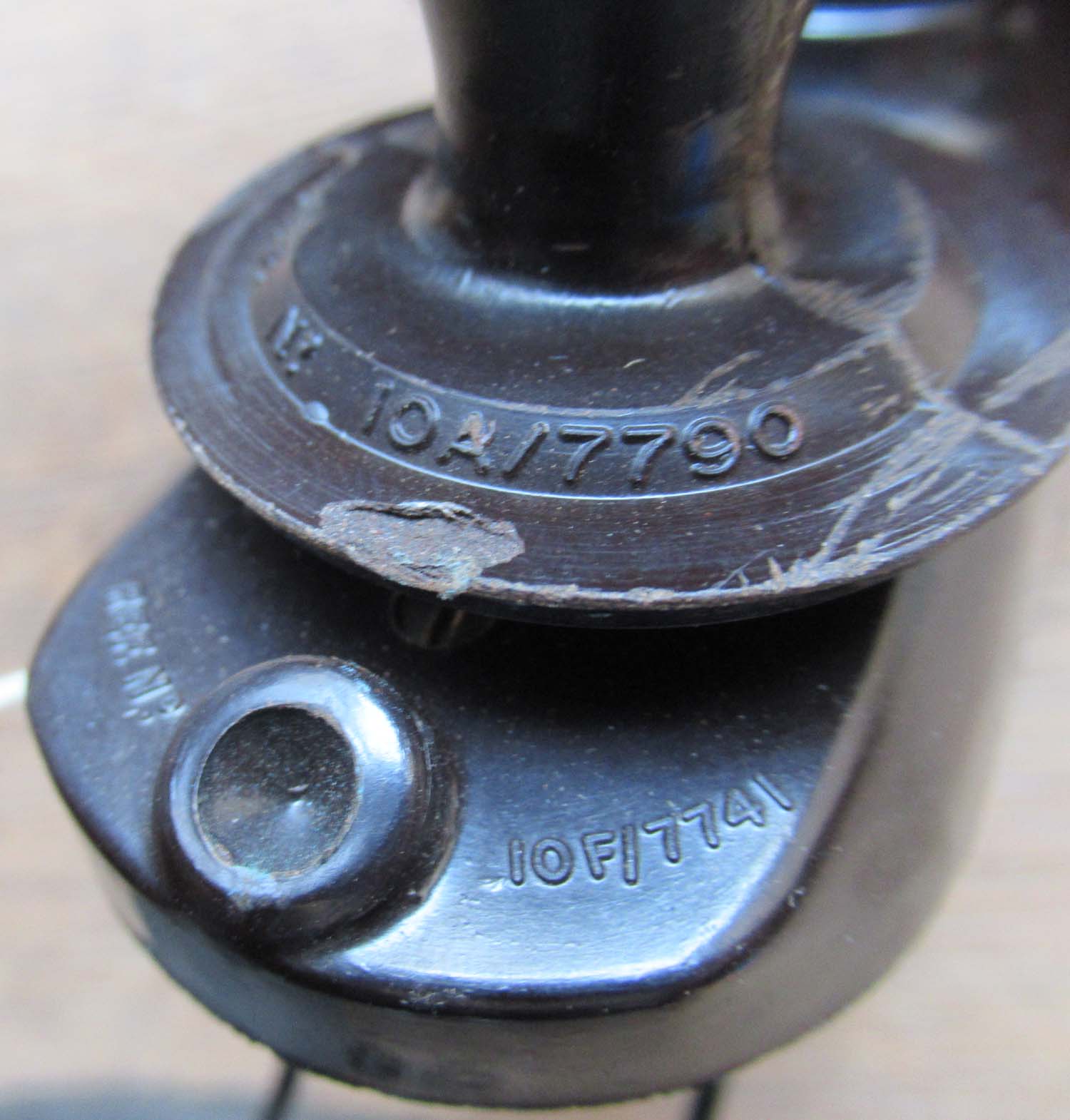
|
Bathtub Morse Key
Switch 5 Type F (No
14 Pg4 Rad)
Used in Lancasters and
practically every RAF wartime Bomber for communicating using
Morse.
This one is old/new stock complete
and in great original condition. Comes with its original box.
The plunger button works as
it should.
10A/7790 on
plunger
10F/7741 on
main body
Click on pictures to enlarge
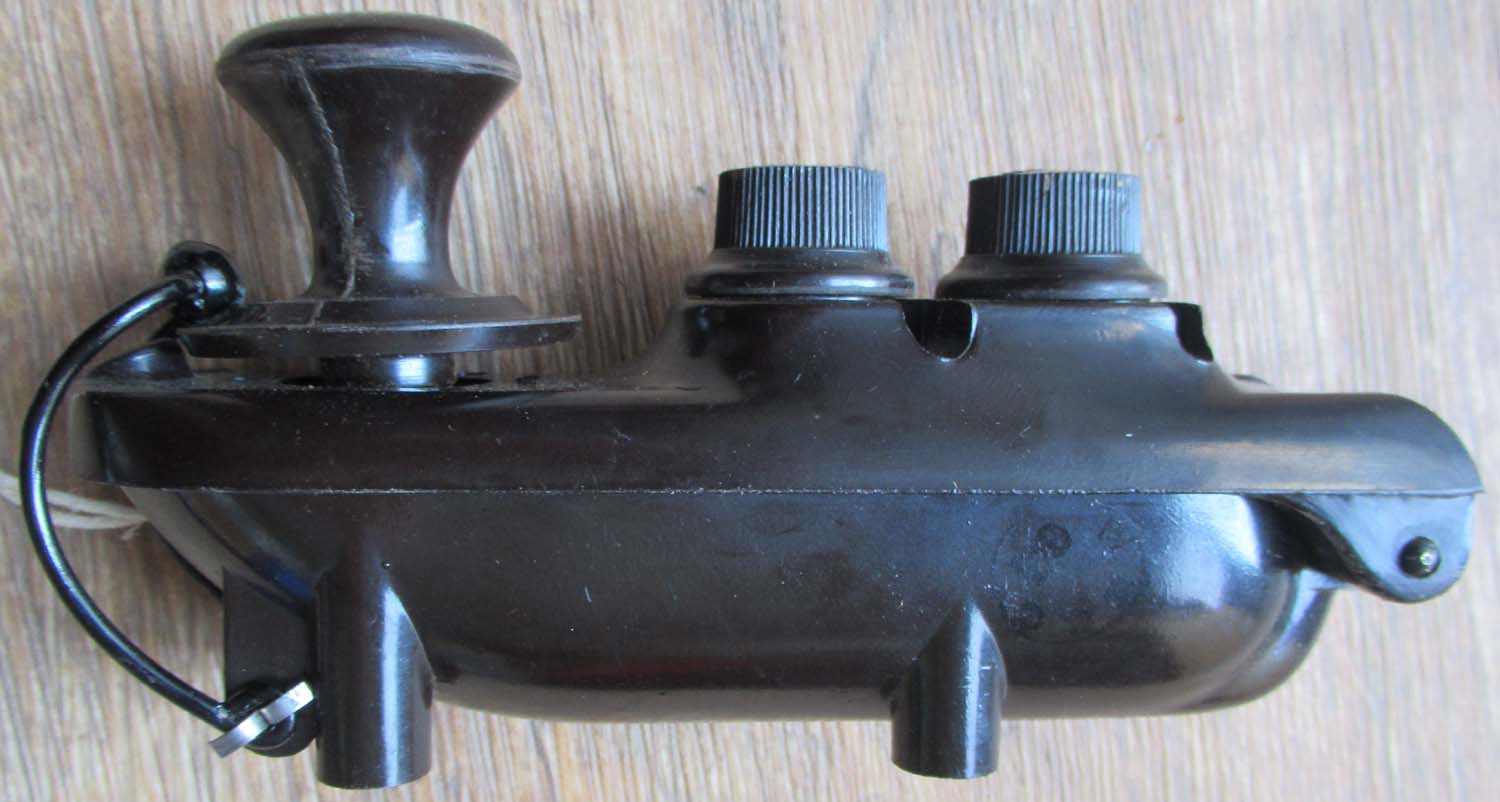
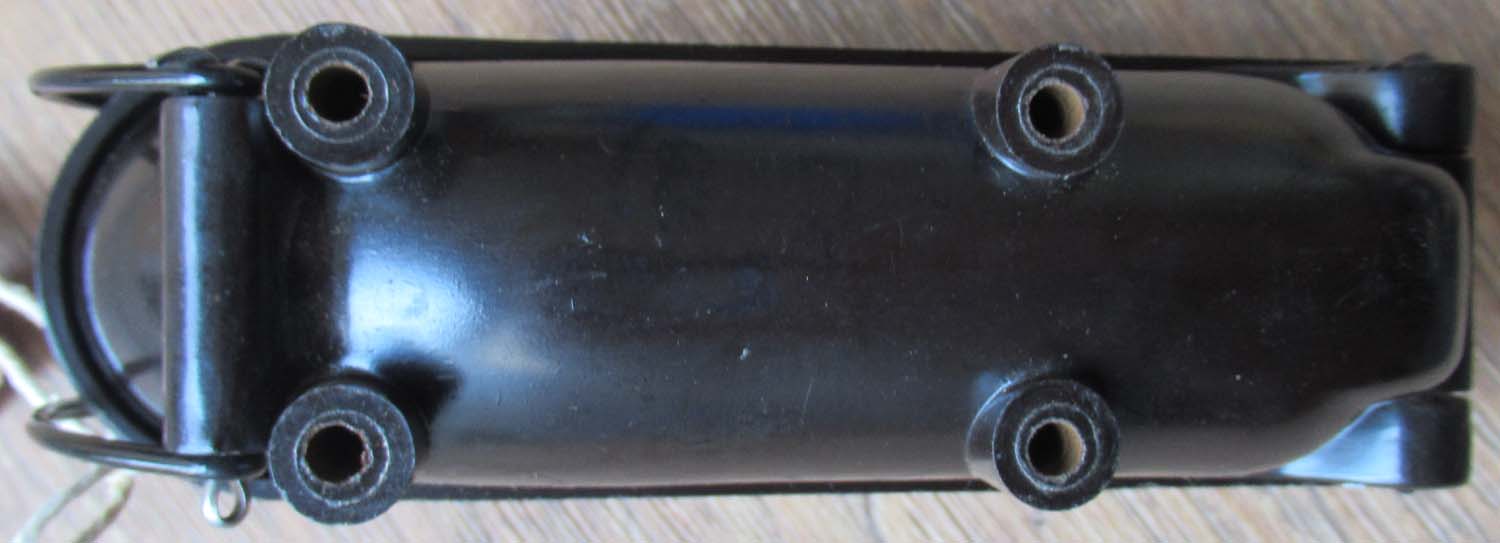
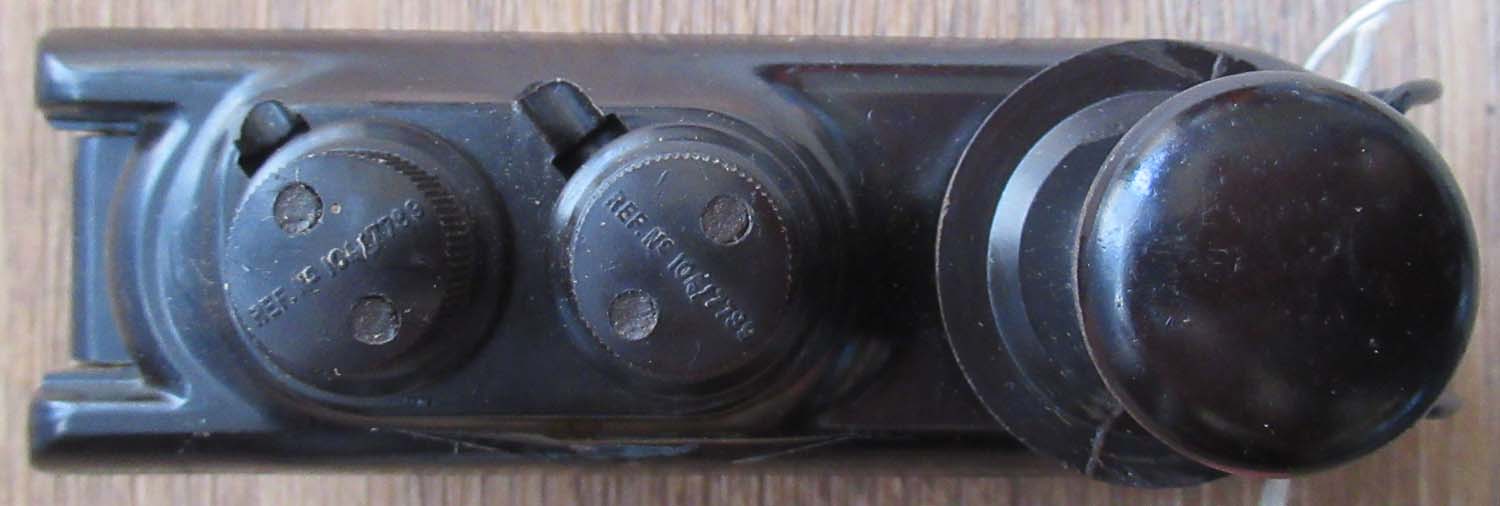


£155


|

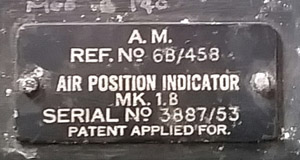
Click Here to see this in
the Instruments Section |
Lancaster Air Position
Indicator
(pg1 instruments)
Here we have
an Air Position Indicator as used by the Navigators of
Lancaster Bombers
Mk 1.B
Reference 6B/458
The Air
Position Indicator (API), is an electromechanical device
that combined the
input from the Air Mileage unit, which gave the true
airspeed, and the heading being flown from the
Distant Reading Compass (DRC – a gyro-magnetic compass that
also had a manually input correction for magnetic variation)
to displayed the air position (i.e. the position of the
aircraft assuming no wind),
displayed as a latitude and longitude, based on a starting
position set at the beginning of the flight
Seen in
Situ Below
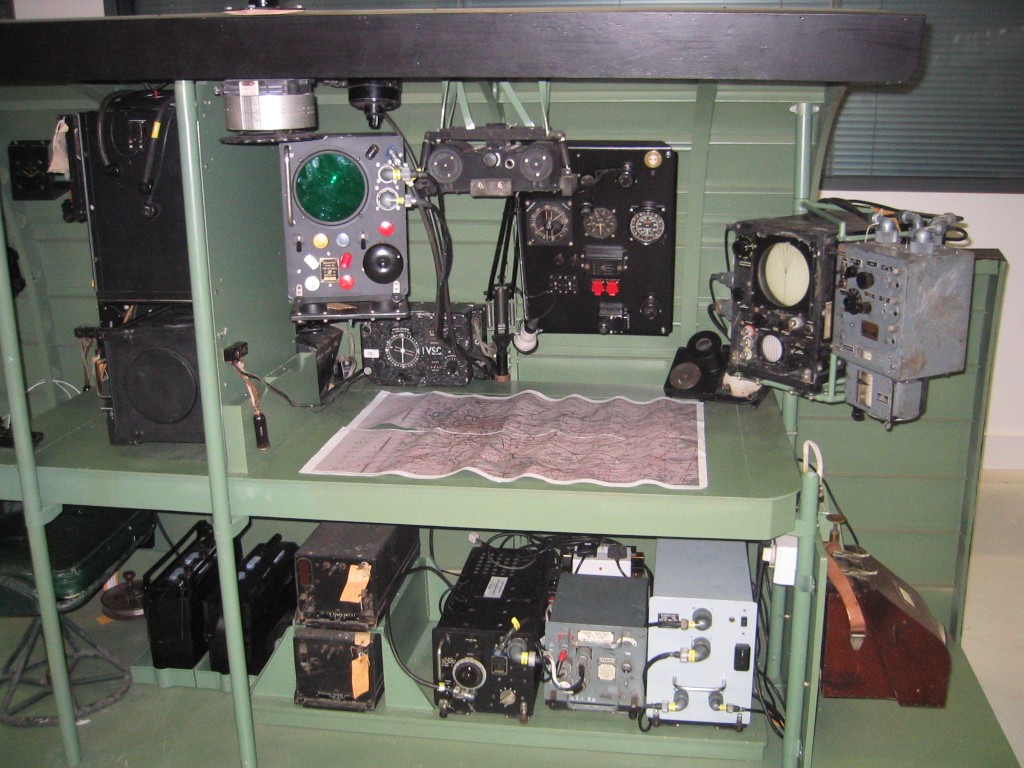
|
|
Click on pictures to enlarge

Click on the
picture's to enlarge.
 |
RAF Ground position indicator MK I (pg 4 radio )
This is a ground position
indicator MK I in nice original condition as fitted to
many of the RAF's heavy Bombers including the Lancaster.
  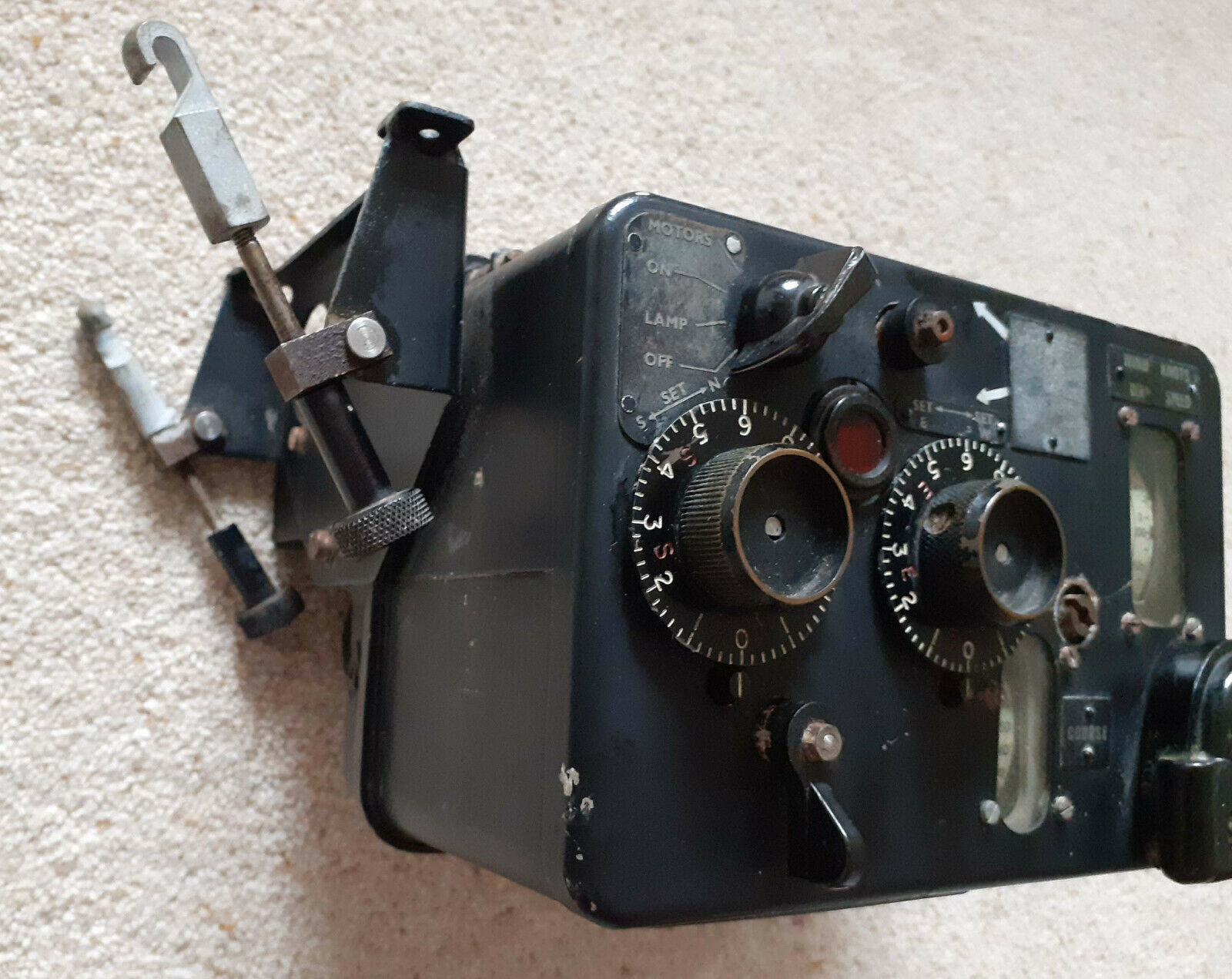 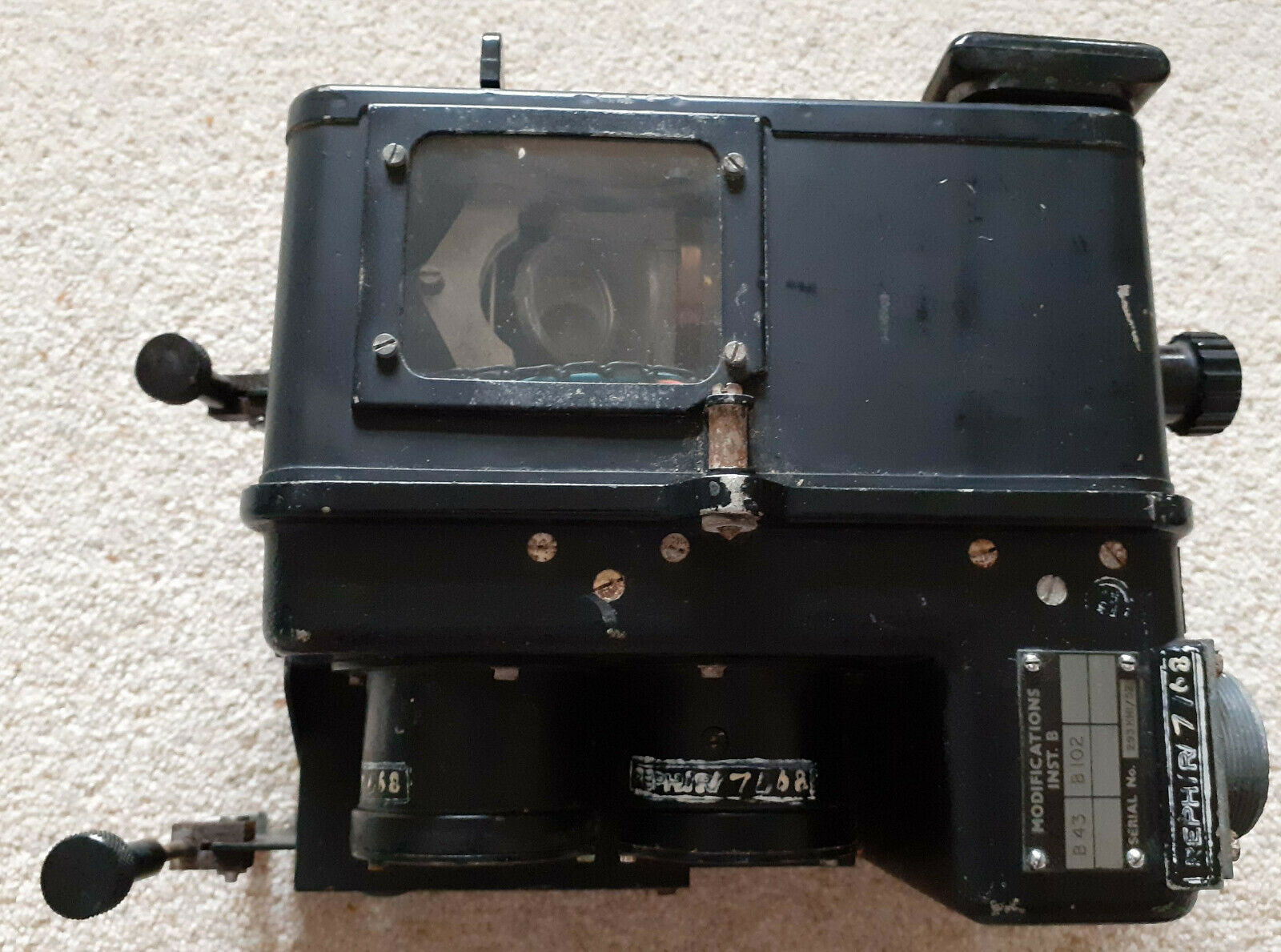
This does what it
says on the box
it is an instrument that determines and
displays automatically the DR (dead reckoning) position of
an aircraft. It gets its data from an ASI (air speed
indicator) and a compass.


Click Here to see this in
the Instruments Section |

Click on the
picture to enlarge |
Type 192 plug-board
(page 4 radio)
Type 192 plug-board which interfaces with the A1134
interphone amplifier
Out of stock
more wanted
contact me
|
|
Click on the
pictures to enlarge.
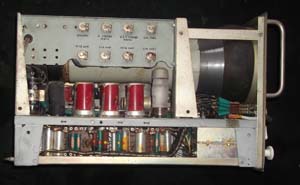

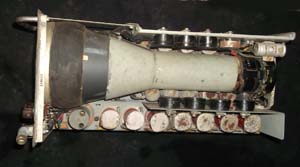

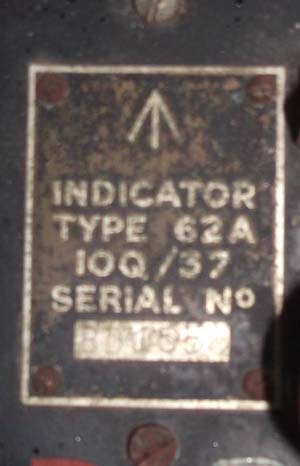
Out of
stock more wanted please
contact me
This piece is
large and heavy overseas buyers please contact me for a
shipping quote
|
Gee set Type 62A (page 4 radio)

Click on the
picture to enlarge.
Here we have a Wartime MK II Gee set in
good original condition and as far as I can tell complete ,
please look at the pictures and enlarge them.
A/M 10Q/37
GEE was a navigation system for aircraft that was
evolved by British scientists to meet the needs of the Royal
Air Force during World War II, at a time when both Bomber
and Coastal Commands faced serious navigational problems.
The system subsequently remained
in service until 1970.
Seen in situ in a Lancaster
bomber
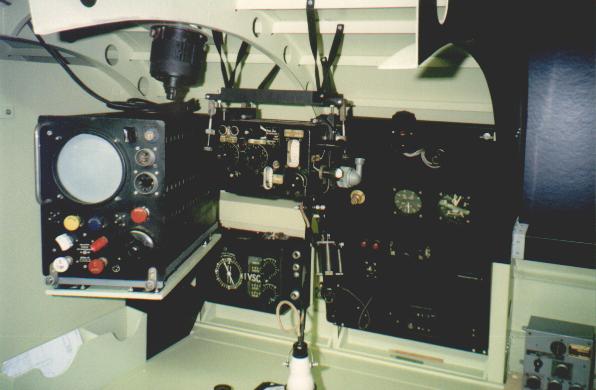
Accurate navigation by day and night under conditions of
radio and radar silence in indifferent weather, by unlimited
numbers of aircraft flying under conditions where tactical
considerations prevented straight and level flying, called
for a position fixing aid which could be operated quickly
and simply.
GEE became operational about the time that the thousand
bomber raids commenced in 1942, and when the battle of the
Bay of Biscay was reaching its maximum.
It was the first
serious attempt to provide the navigator with a rapid means
of determination of position, and seldom has any one
invention so faithfully and quickly satisfied the
requirements for which it was developed.
The principle of operation was the measurement of the time
difference between the reception of pulses from ground
transmitters (working in pairs), measured on a cathode ray
tube display in the aircraft. Two or more Slave ground
stations, working with a common Master station, constituted
a complete Gee Chain.
The time difference between signals from two pairs
of stations were measured simultaneously.
When the readings were referred to pre computed lines on
a special chart, the two simultaneous position lines
obtained combined to give a position fix for the navigator.
To secure a position line, an aircraft had to be within
range of two transmitters, and to secure a position fix,
within range of three stations, ie., a common Master and two
Slaves.
|
|
|
1 2
3 4
 |
